Revisiting Budapest was almost as good as seeing it for the first time 11 years ago. The former Eastern Bloc had once been my home for 6 months during my studies and I feared its economic progress and admission into the E.U. would have damaged its unique character. I needed to go back to prove me wrong and rediscover what I consider to be the true jewel of all of Eastern Europe.
True, the city has cleaned up since and is a lot more tourist friendly but thankfully it still retains that edginess, the powerful if slightly painful links to the past, and let’s not forget the majestic buildings which have no equivalent in the region. It is as inspiring as ever. I started in my old stomping grounds near the inner city where the two focal points of my student life were based: school and the market.
Fővám tér, one of the most beautiful squares in Budapest, faces the market and university.
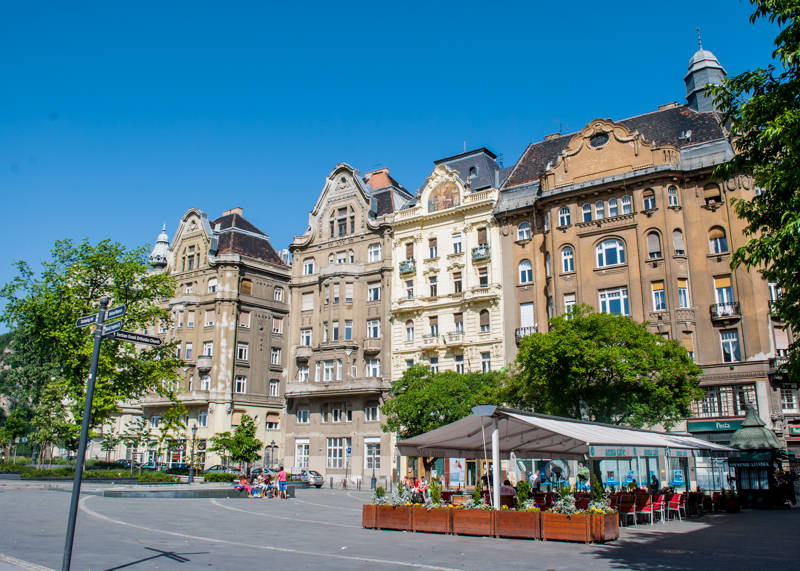
The Grand Market Hall and its neogothic touch served as my very big grocery store and nothing has changed…
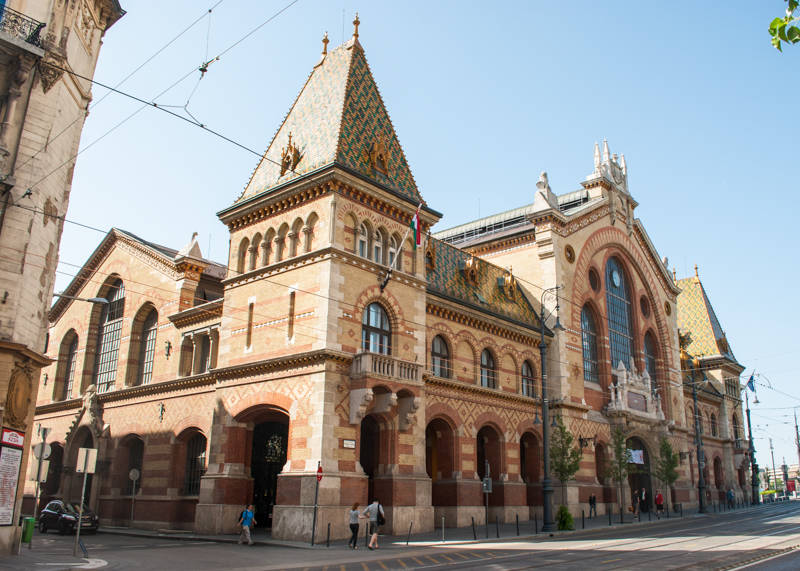
Three floors and over 10,000 square meters offer anything you would need.
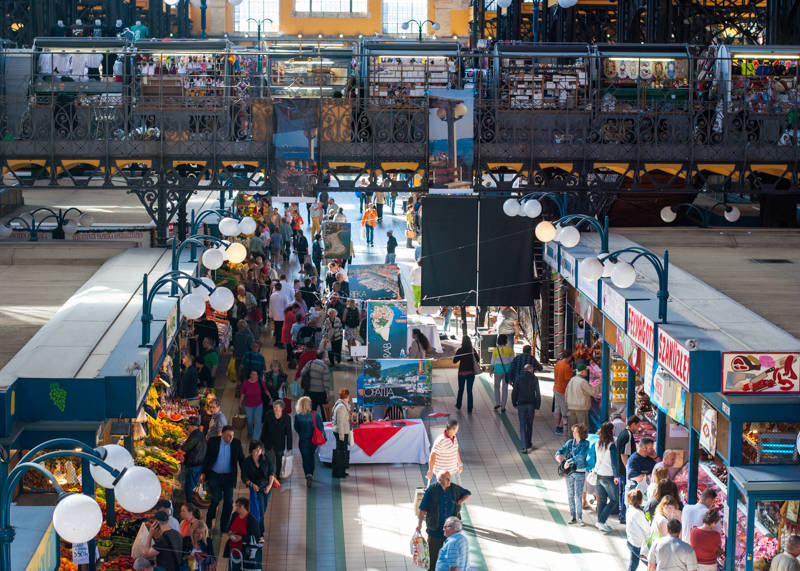
Ground floor is for fresh groceries, highlighting Hungarian’s love for meat in all its forms.

Pig is hugely popular here, especially the Mangalica breed which originated in Hungary. Hairy descendant of the wild board, the Mangalica is used mainly for sausages, not being lean enough for the usual cuts.
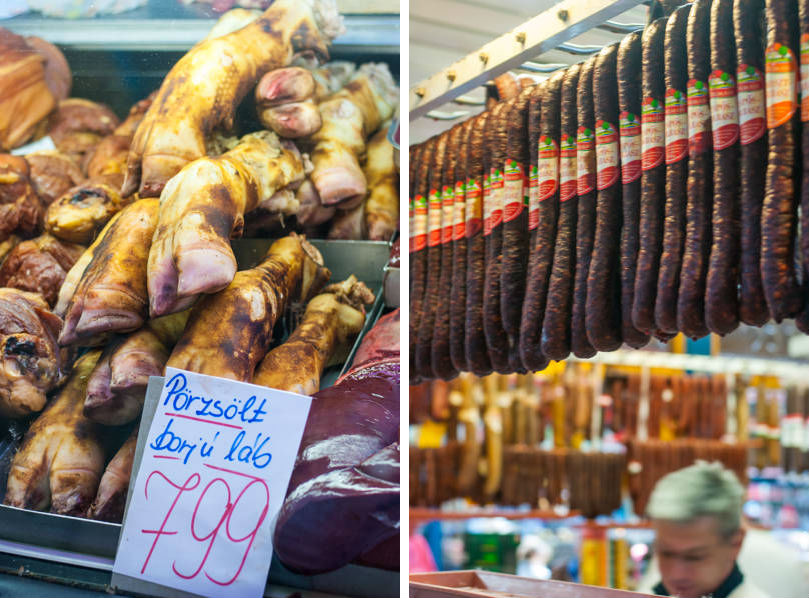
Produce stalls overflow with peppers, paprika, cabbages…
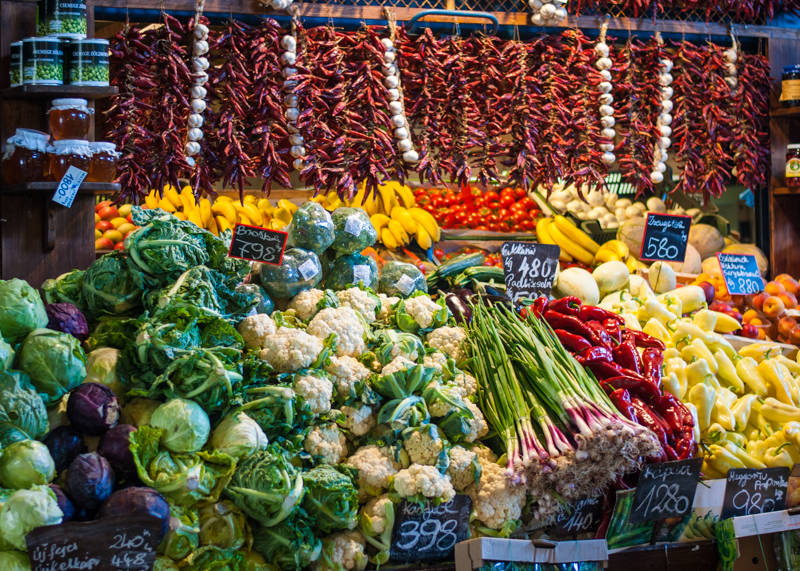
…and in season white asparagus which are very common in Hungarian cuisine.
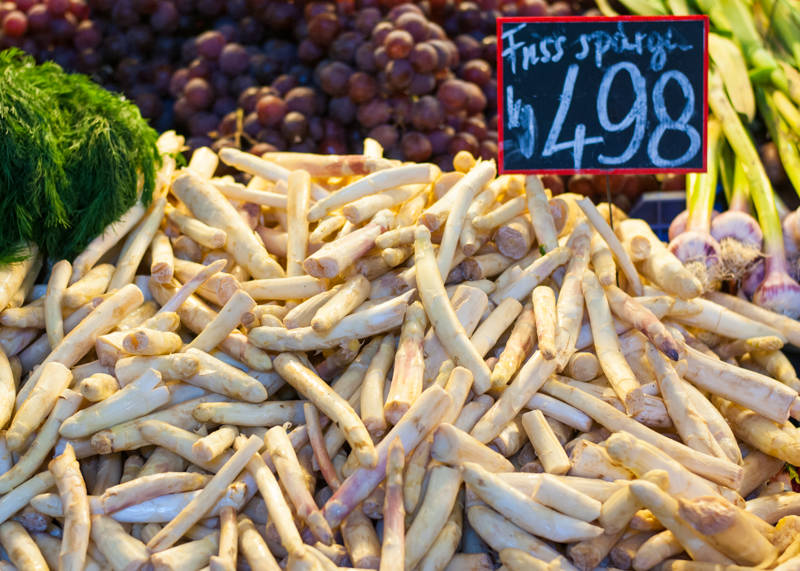
Wild mushrooms (bigger than my fist!) are classically eaten in a soup.
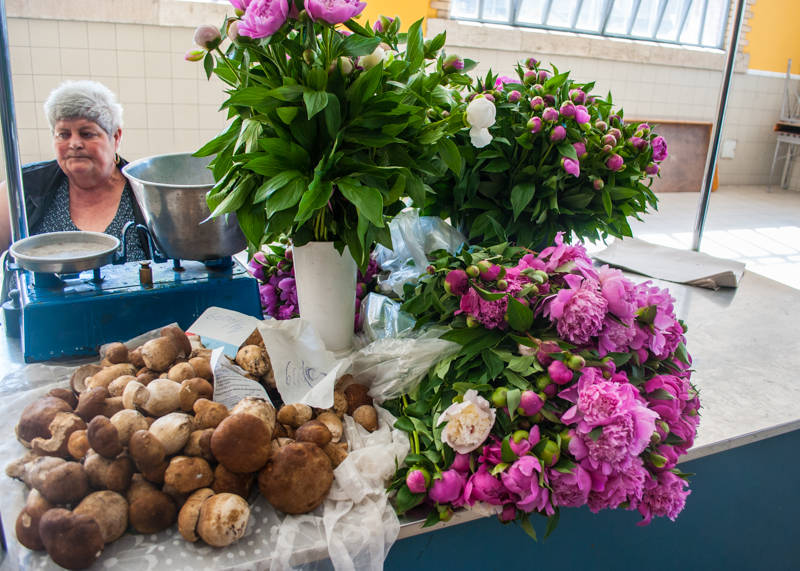
The second floor is home to eateries and souvenirs and you can eat traditional food for a bargain here (insider hint!).
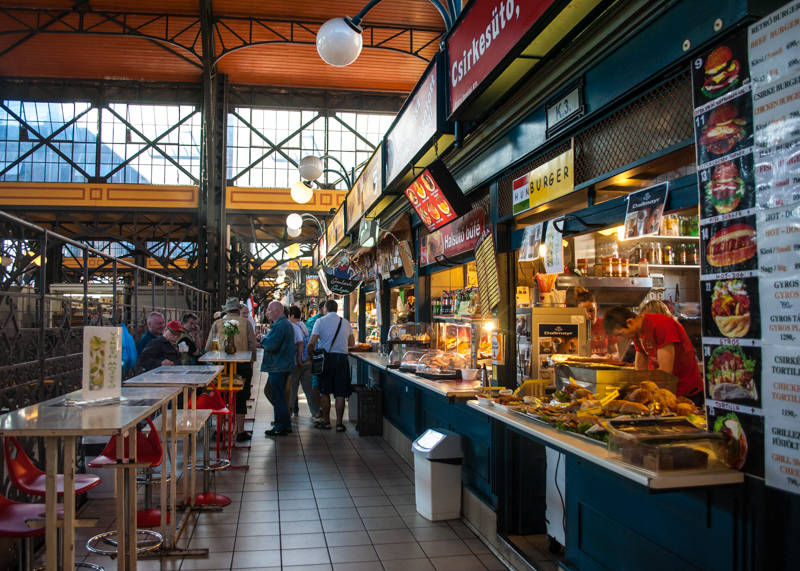
Especially worth trying are the lángos, deep fried flat breads large enough to make a meal. You can pick any toppings you’d like, the classic one being sour cream and cheese (and usually eaten for breakfast).
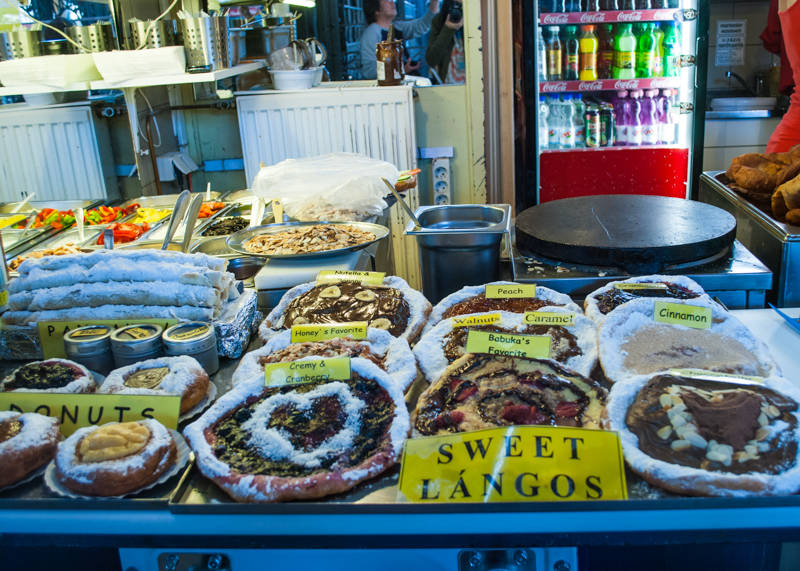
I sweetened mine with some strawberries…

Next comes stalls of souvenirs mainly focusing on the country’s traditional craft of embroidery and lace. Everything from tablecloth, wall decor, and clothing is adorned with bright colors and folkloric details – a great place to buy a few gifts and avoid the touristy and more expensive shops outside.
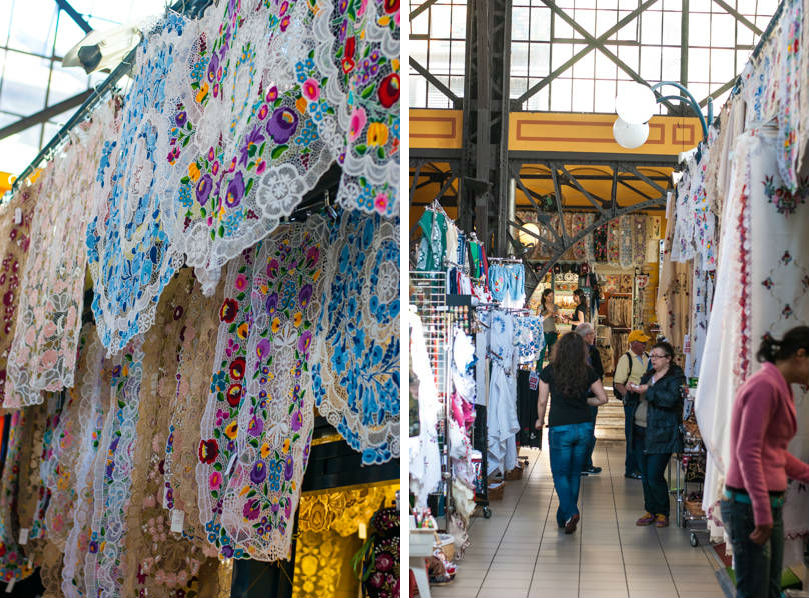
Right next to the market stands my old school, Corvinus University of Budapest, without a doubt the most historical and atmospheric building I’ve ever studied in. It is after all a UNESCO Heritage Site and was used as a military base during WW2.
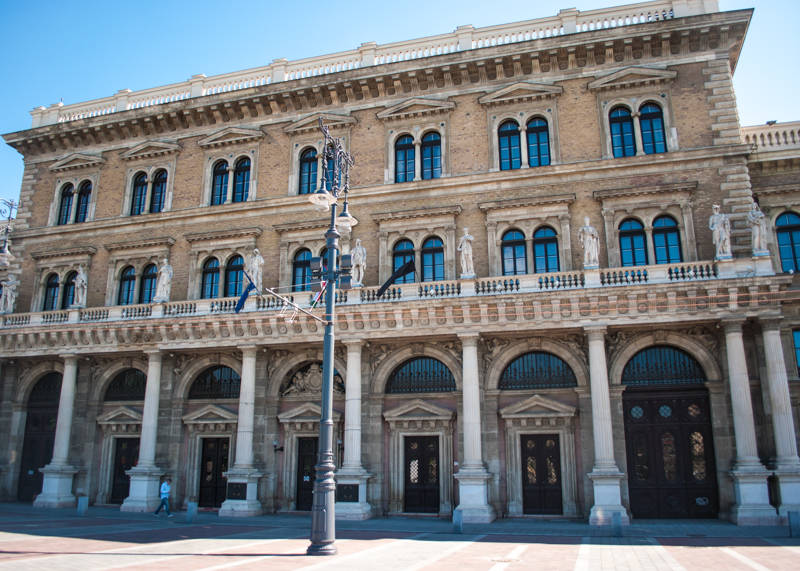
New buildings have popped up in recent years in the area, bringing a modern and playfully creative style like this close up of the CET, a spectacular whale-shaped glass building on the bank of the Danube.
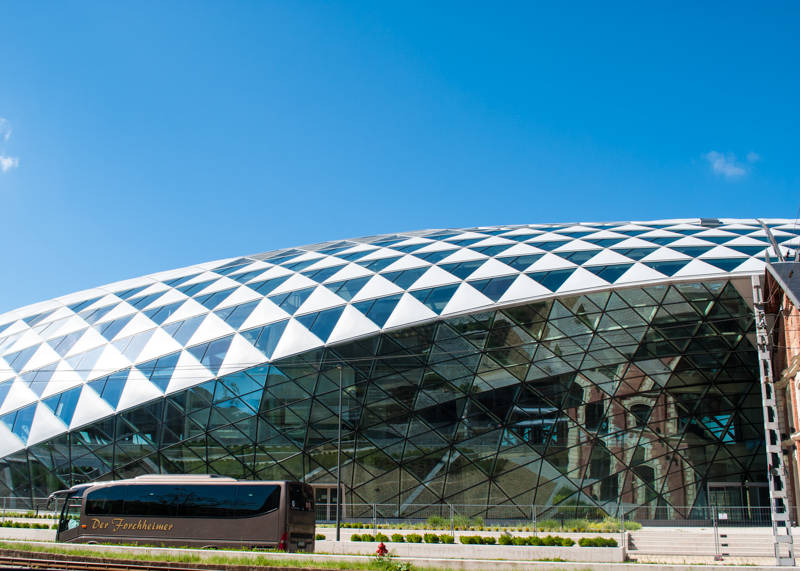
And just around the corner from there, my old street and flat at #11 Kinizsi Utca, totally untouched apart from the corner bistro which changed names.
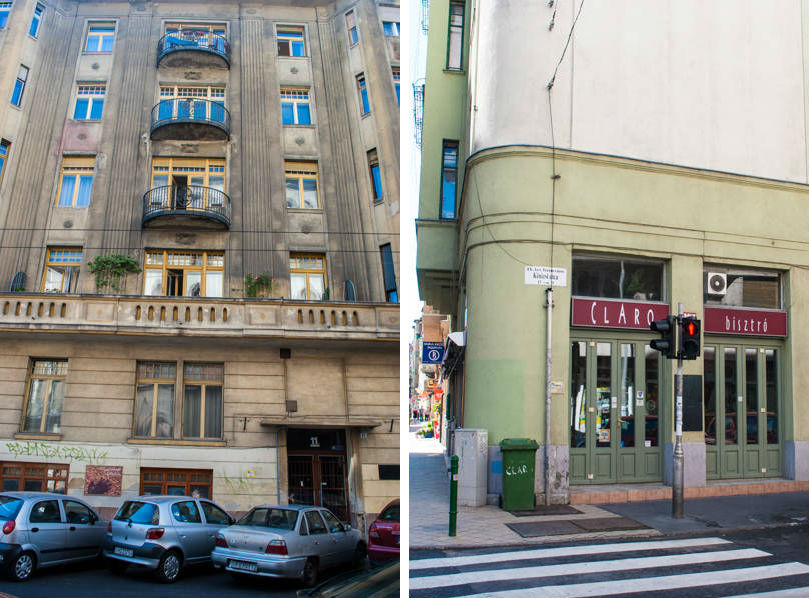
Pedestrian Raday Utca at the corner of Kinizsi was a favorite stroll and home to our go-to restaurants. They’re all still standing and they’ve added huge terraces to benefit from the city’s great summer weather and turn it into one of the most condensed and casual eating destination in the city.
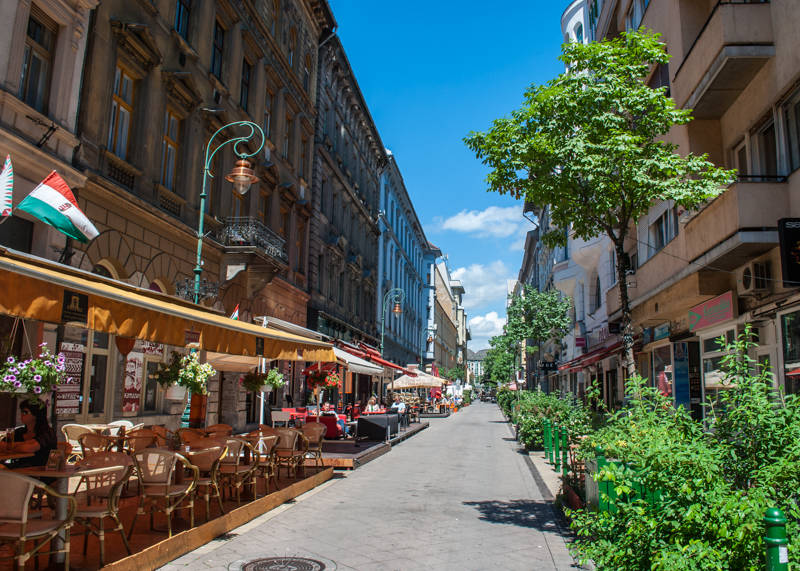
The other quieter side leads to a pretty and quaint residential neighborhood.

The beautifully designed space hosts a permanent exhibition depicting the persecution, suffering and massacre of Hungarian Jews and Romas during The Holocaust.
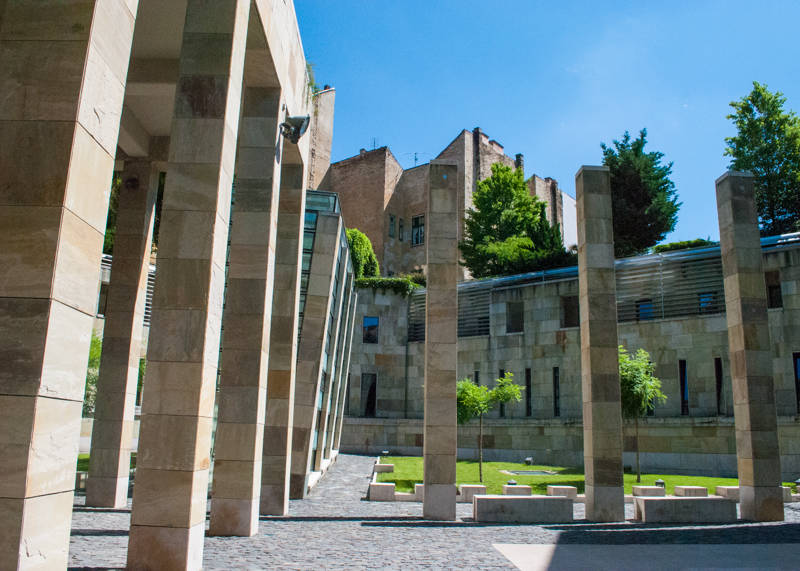
It is one of the best exhibitions I’ve ever seen on the subject and a must if you want to understand one of the darkest moments the city lived through. A synagogue and wall of victims in the courtyard further tells the story.
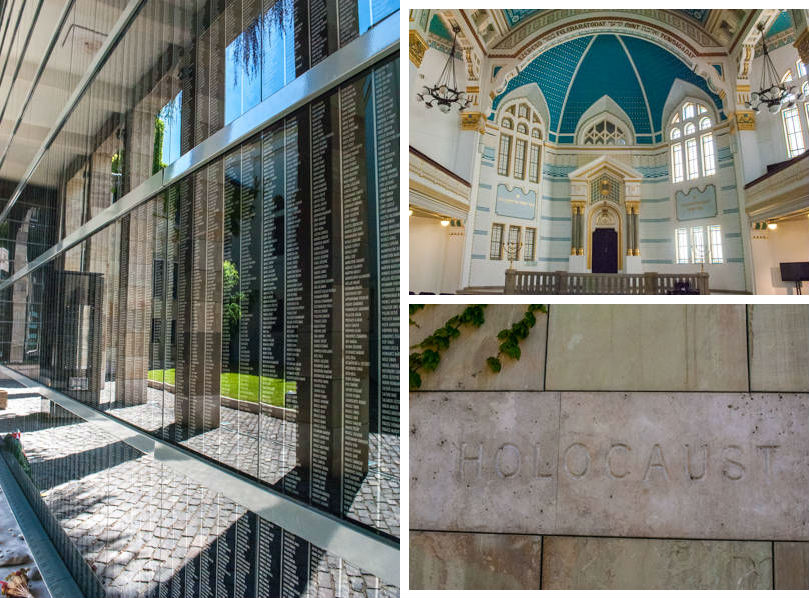
Walking back towards the city center, there’s the Art Deco Corvin Film Palace where I used to catch the latest movies.

The nearby unique Art Nouveau building housing the Museum of Applied Arts can be seen from far away.
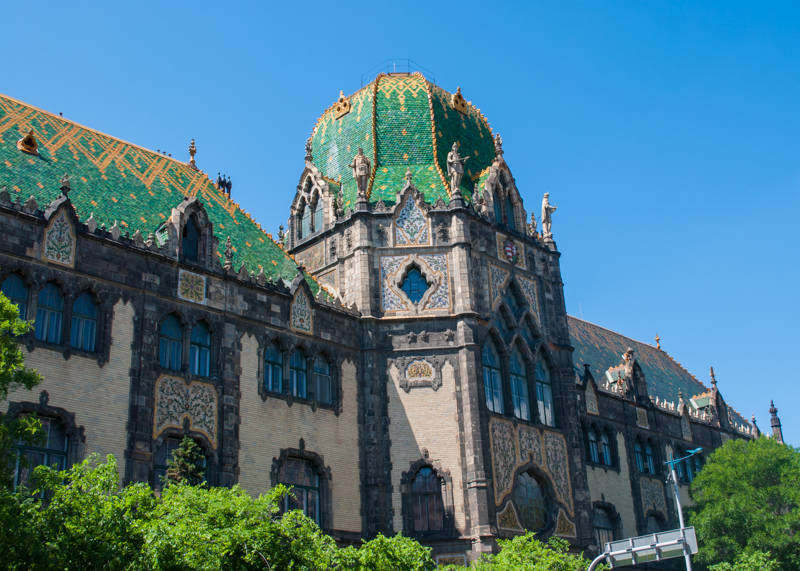
The Dohány Street Synagogue, the largest in Europe, marks the beginning of the Jewish Quarter and houses the Jewish Museum.

The neighboring streets are worth a stroll, mixing old buildings, recently opened hip boutiques, and a vast array of trendy restaurants and bars, including the famous ruin pubs which are Budapest’s latest entertainment trend. The charming retro pubs are housed in formerly abandoned buildings and makes the neighborhood the best bar-hopping scene of Budapest. You can take a peek into cute residential courtyards amidst the hustle.
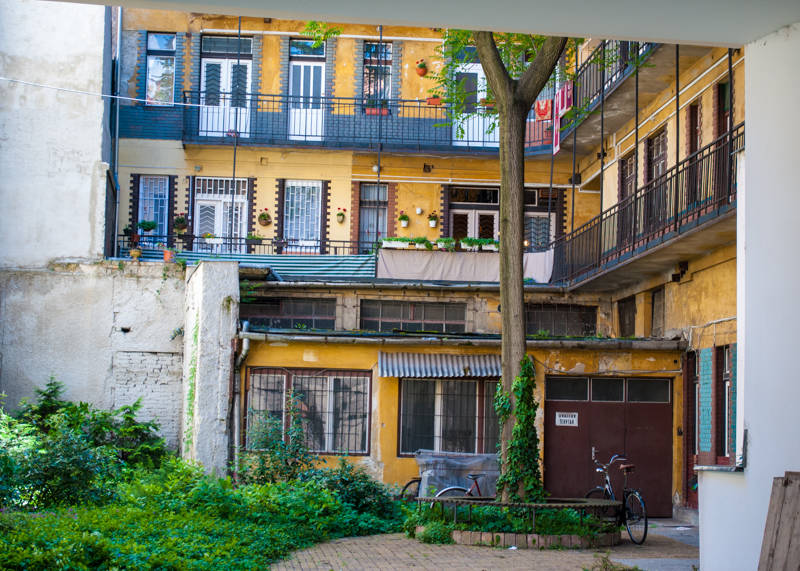
Statues and street art are fairly common around here and shown in very creative forms…don’t forget to look up when you walk as the best is often above ground level.
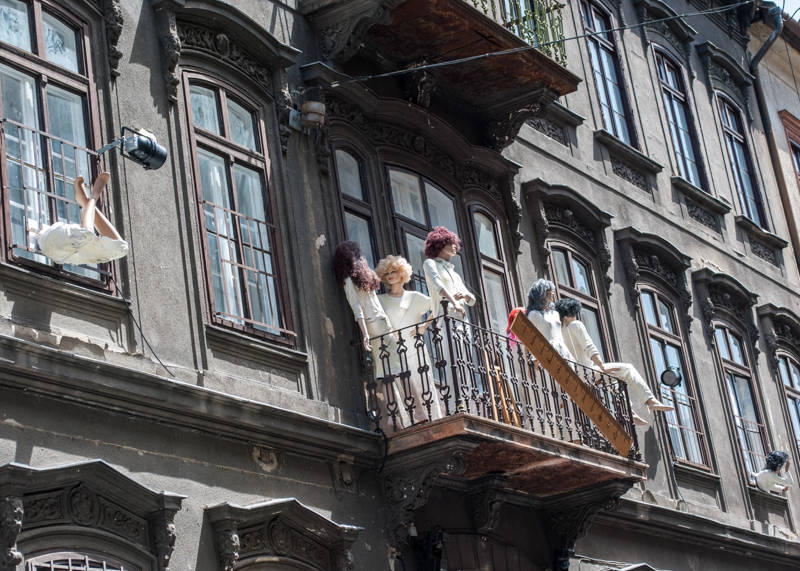
While there are plenty of good and cheap eateries around, it’s worth seeking out Bock Bisztro on Erzsébet körút, a fine Hungarian wine restaurant that’s part of the new ‘modern food’ movement. I had only known menus filled with creamy soups and meaty stews back in the days and my biggest discovery of this trip was to see how the new restaurants were turning towards a lighter and brighter cuisine. There’s still a lot of that comfort food around though, the butter coming with my bread basket being laced with pork fat and crisp skin bits…
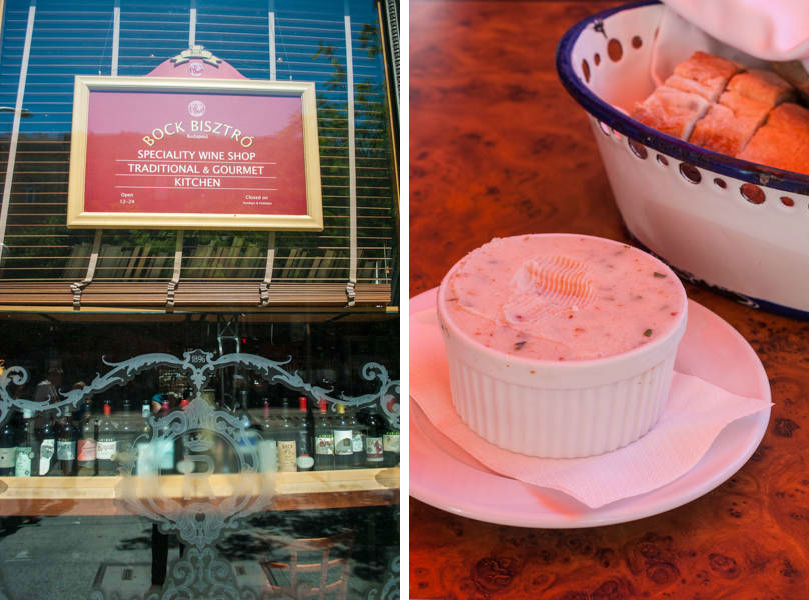
Set within the prestigious Corinthia Grand Hotel Royal, the bistro style interior is light but elegant, suitable for a casual lunch as well as a formal dinner.
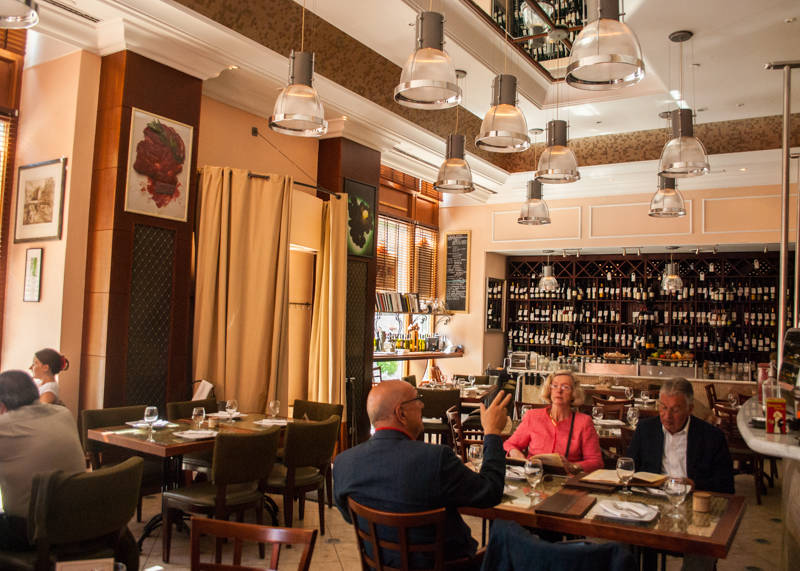
The dishes are traditional Hungarian with a modern edge such as this Cold Stuffed Paprika.
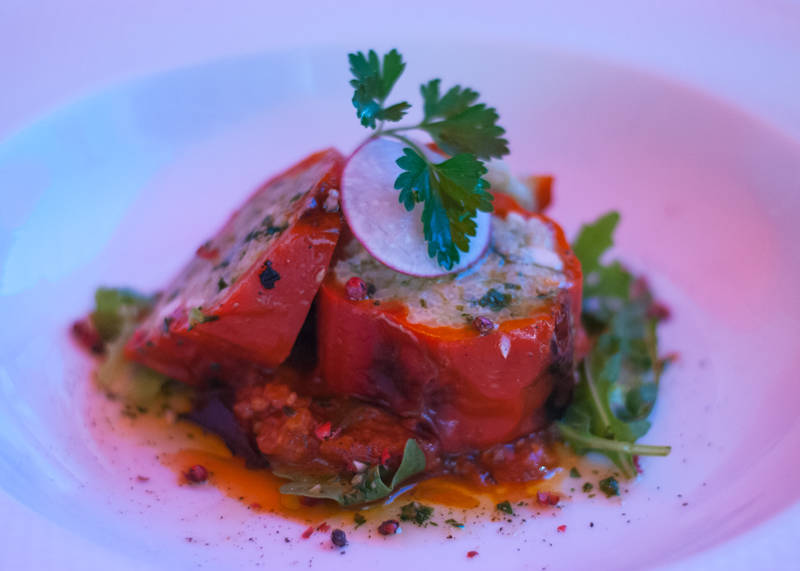
I couldn’t resist getting a filling soup, this time called Salad Soup which was topped with a huge slice of foie gras, hmmm…

Continuing west, we get into the center of Budapest’s cultural life with Andrássy Avenue, their equivalent of Broadway. The large boulevard links some of the best places for classic entertainment such as the Opera House (below), the Liszt Ferenc Music Academy, and the Operetta Theater.
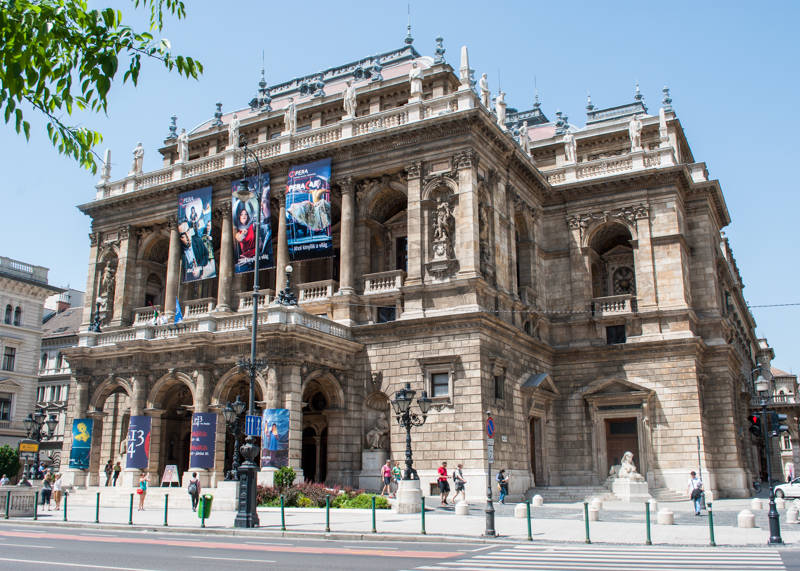
Andrássy Avenue is also home to another important museum related to some of the country’s darkest hours – the House of Terror. It is dedicated to the fascist and communist dictatorial regimes in 20th-century Hungary, two very bloody periods in the country’s history.
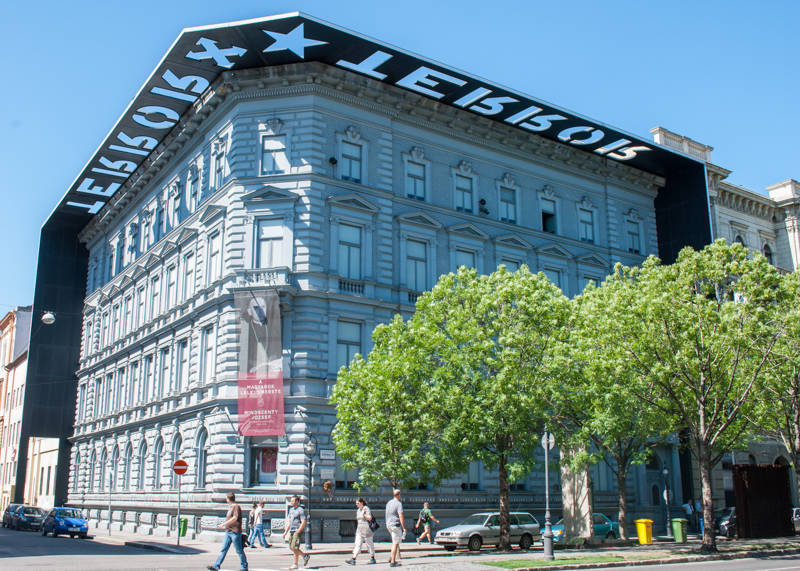
It’s also a memorial to the victims of the fascist Arrow Cross Party and communist AVH (similar to the Soviet KGB), especially felt when visiting the basement’s torture cells which were used to break the will of their prisoners.
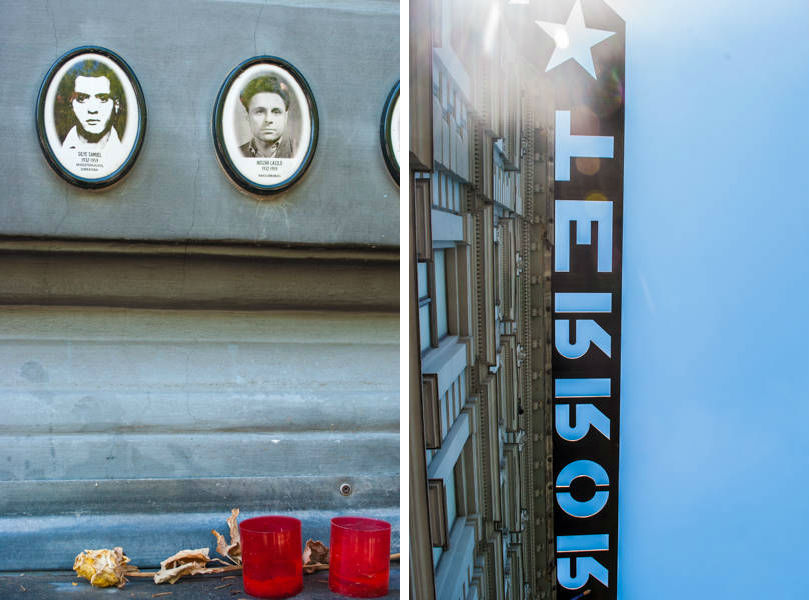
On a lighter note, the nearby pedestrian Liszt Ferenc tér, named after the famous Hungarian composer, is the perfect place to hang out and grab a bite in the shade.
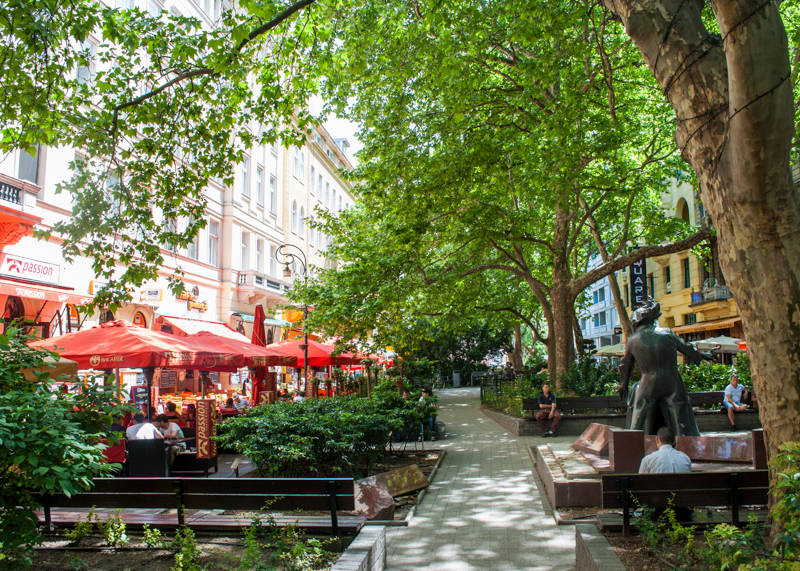

Menza restaurant is always packed, especially its outdoor terrace, and offers a cool retro vibe with its mid-century inspired design.
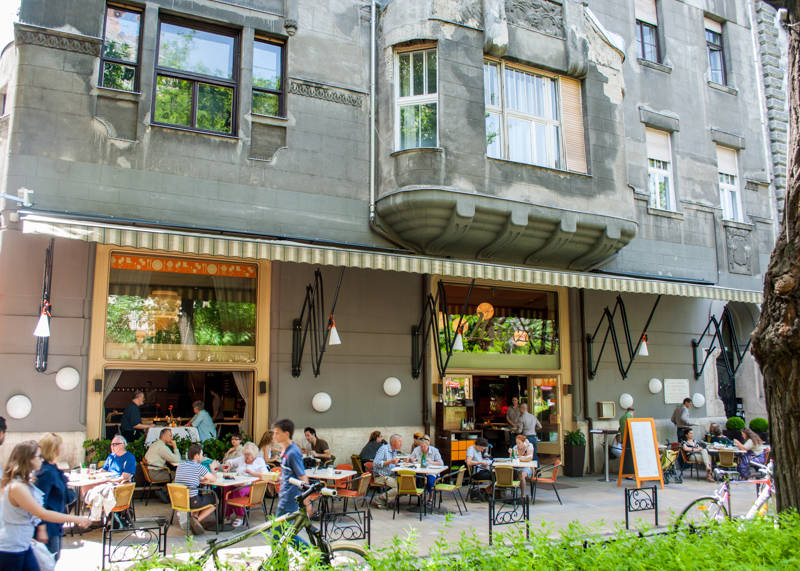
The inside was inspired by socialist-era workers canteen.
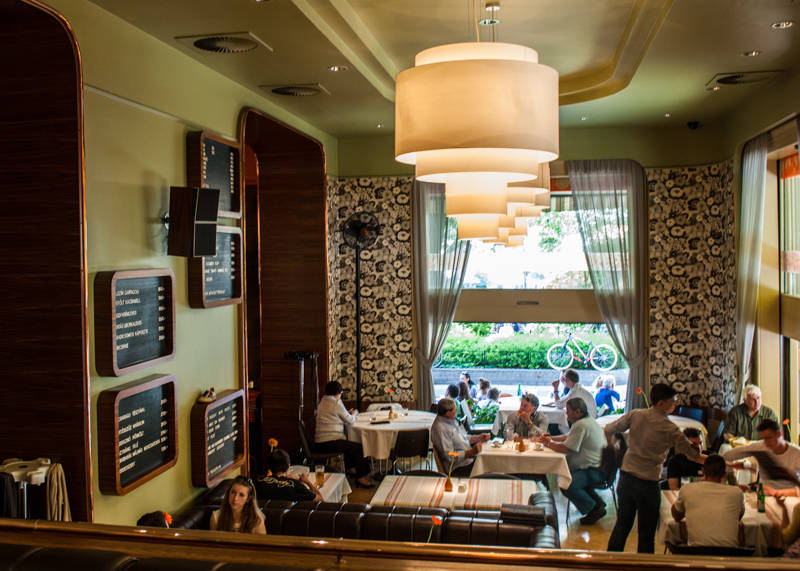
The menu is made up of Hungarian classics and the portions are fairly generous. I couldn’t come to Budapest, especially in this beautiful summer weather, without a bowl of cold cherry soup which used to be one of my favorite dishes (and definitely only to be found here!). The edible flowers were the icing on the cake…
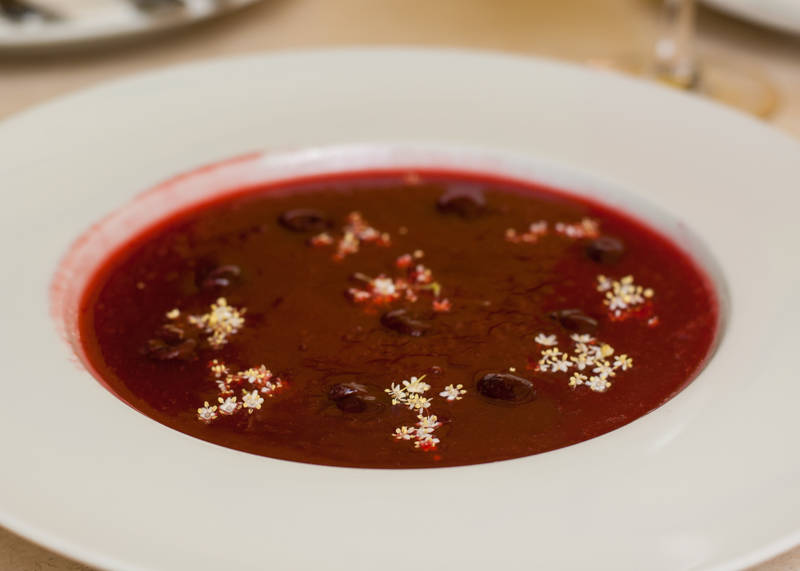
A carpaccio with pine nuts and Parmesan was the perfect complement to a ‘light’ summer lunch.
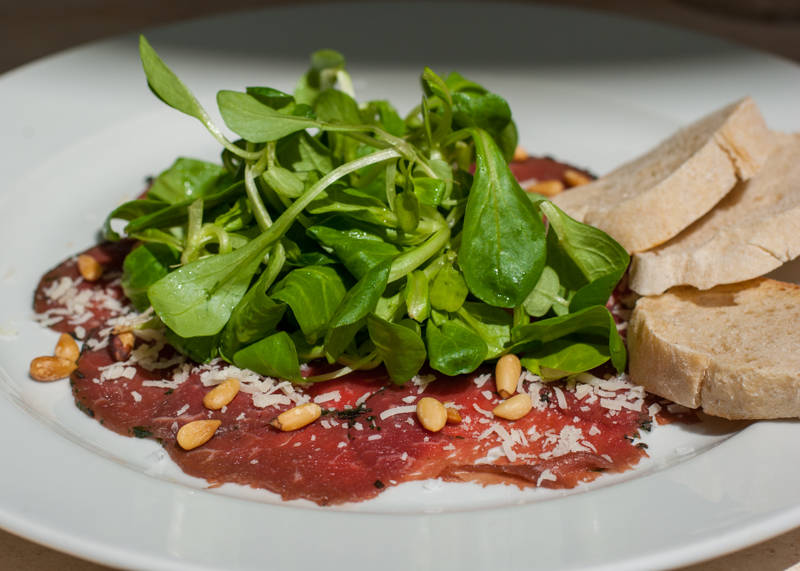
Back to the starting point on Fővám tér, the Danube calls for some exploration with a lot of the best sights waiting for us on its banks. The famous Gellért Hotel with its Art Nouveau thermal baths is right across the river.
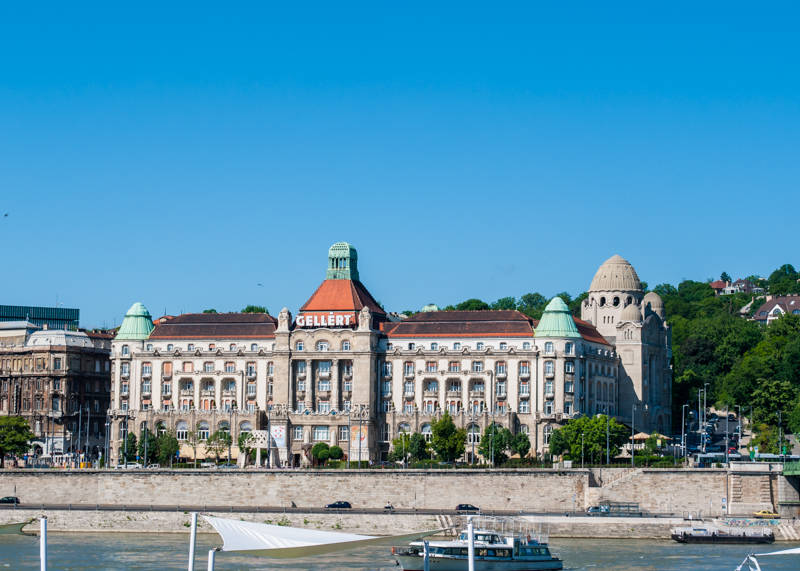
Take the green Liberty Bridge to cross over to the Buda side (there are several bridges you can use to cross, but this one is particularly beautiful, and it’s also the shortest!).
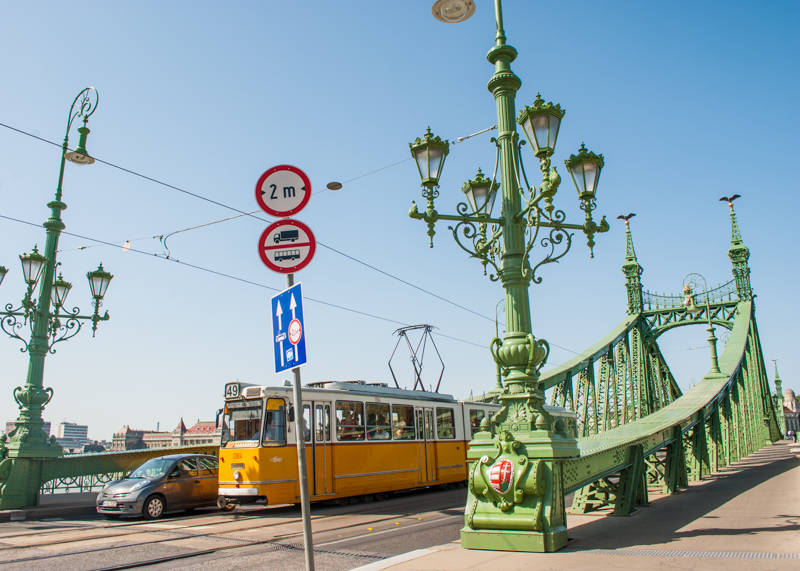
Facing you is Gellért Hill which offers some of the best panoramic views of the city as well as a fortress (the Citadel), the Liberation Monument, and at the top the Gellért statue.
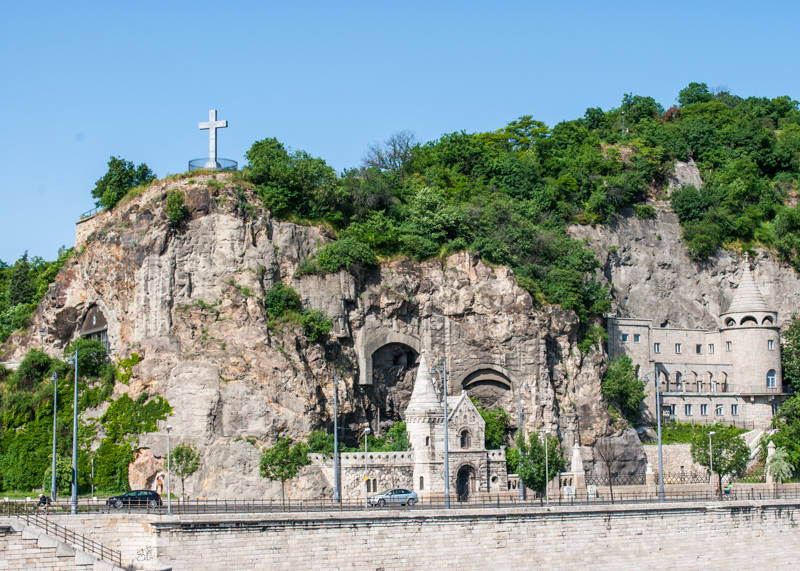
You are now on the Buda side of the Danube and want to head north, following the river, to reach Buda Castle after a short walk up.
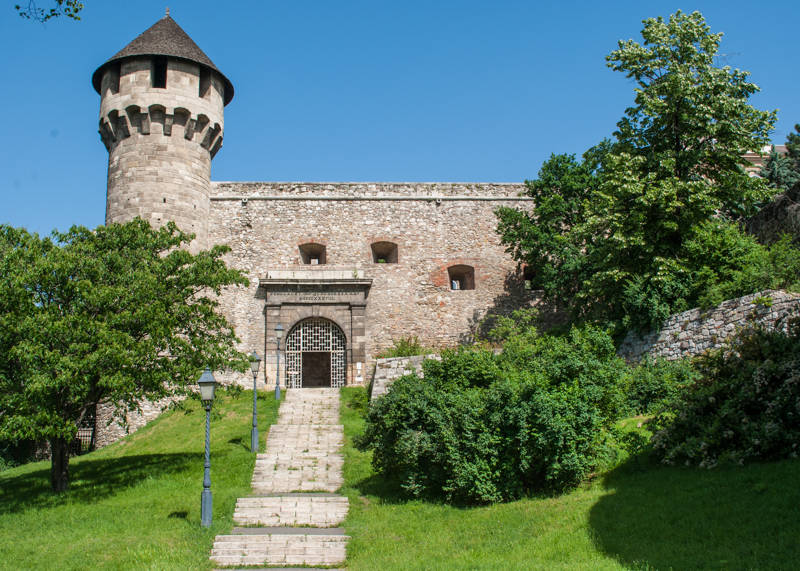
You can roam the grounds of the palace complex of the Hungarian kings and take in the views of the Buda hills dotted with colorful mansions.
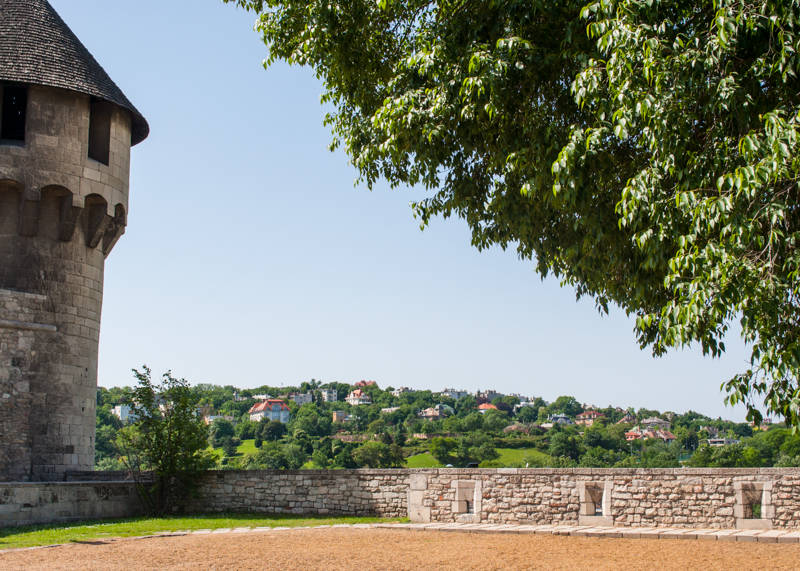
The main building houses the Hungarian National Gallery which is well worth a visit.
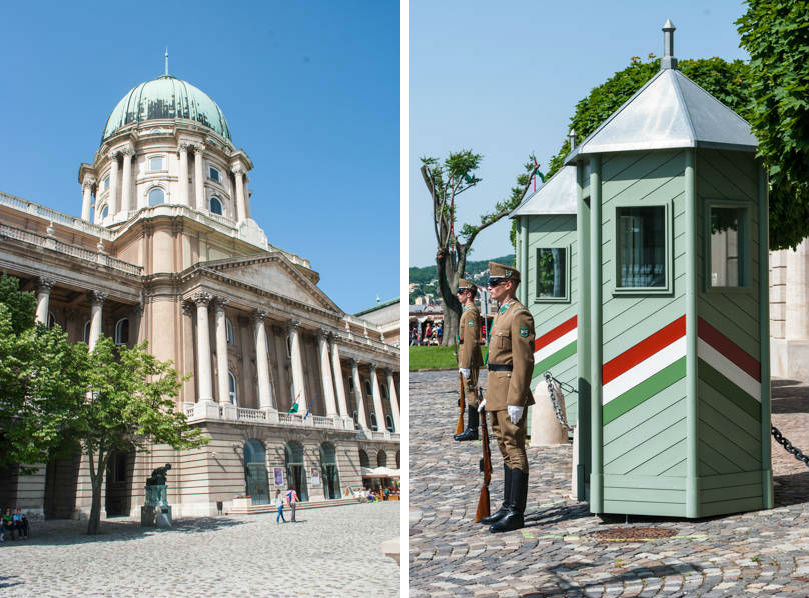
The view of the Danube, famous Chain Bridge below and Parliament in the distance is classic postcard scenario.
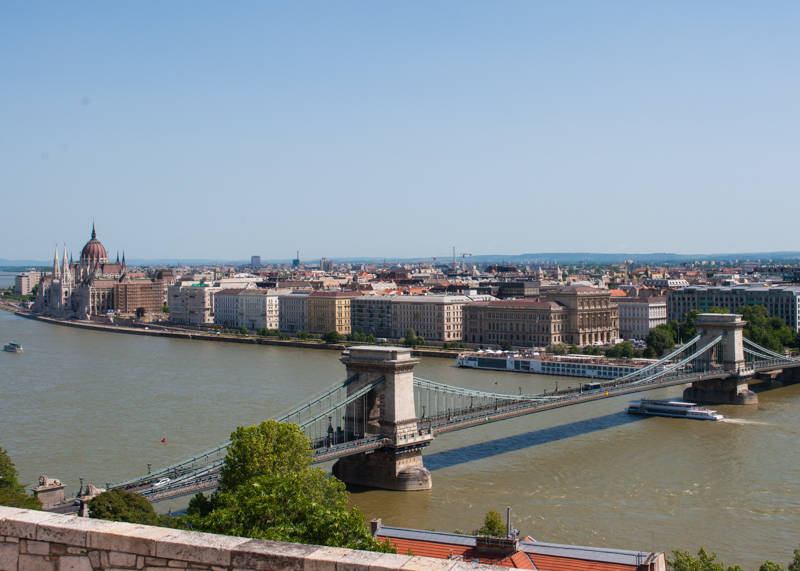
Before heading down, take some time to explore Castle District north of the Castle with its Medieval, Baroque, and 19th-century houses and churches.
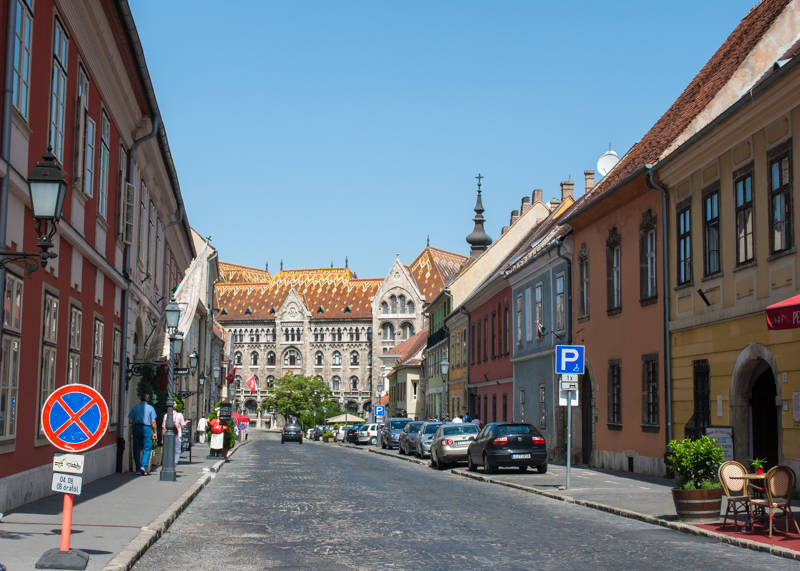
An old lady playing an antique music box added to the old world charm.
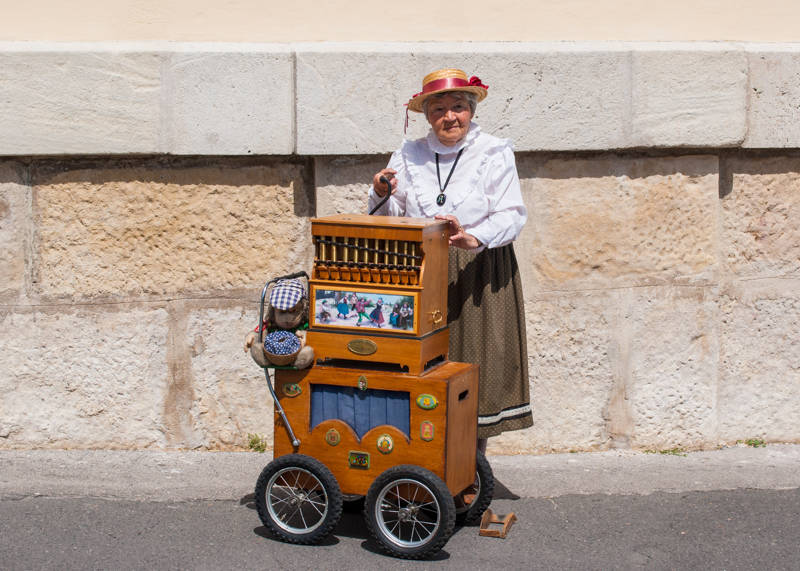
As far as street food goes, I’m partial to getting a warm Kürtőskalács (also called chimney cake), which is a spiral-shaped pastry usually dusted with cinnamon. I just love to walk while I unfurl and take a bite of the sweet, crispy exterior and soft interior.
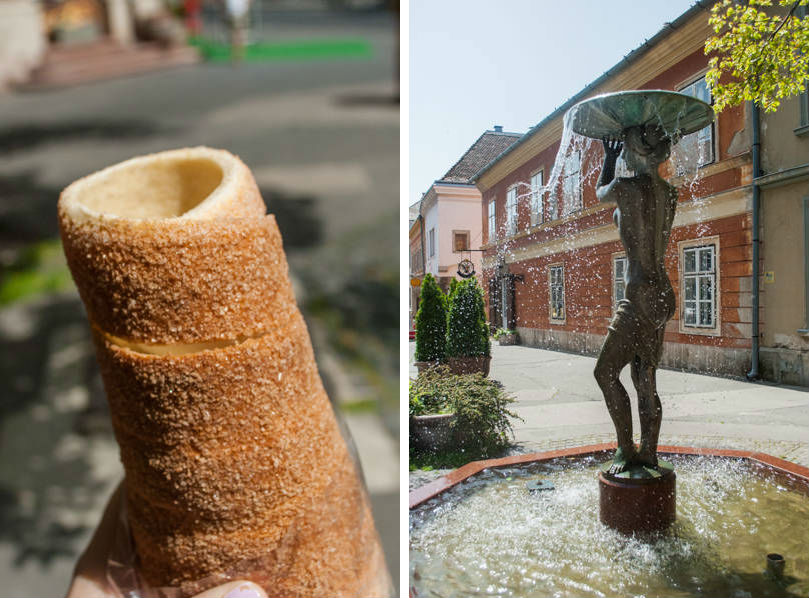
Walking in the Castle District, you won’t be able to miss the tall tower of Matthias Church which can be seen from pretty much everywhere. The 700 years old gothic church is one of the most well known landmarks in the city.
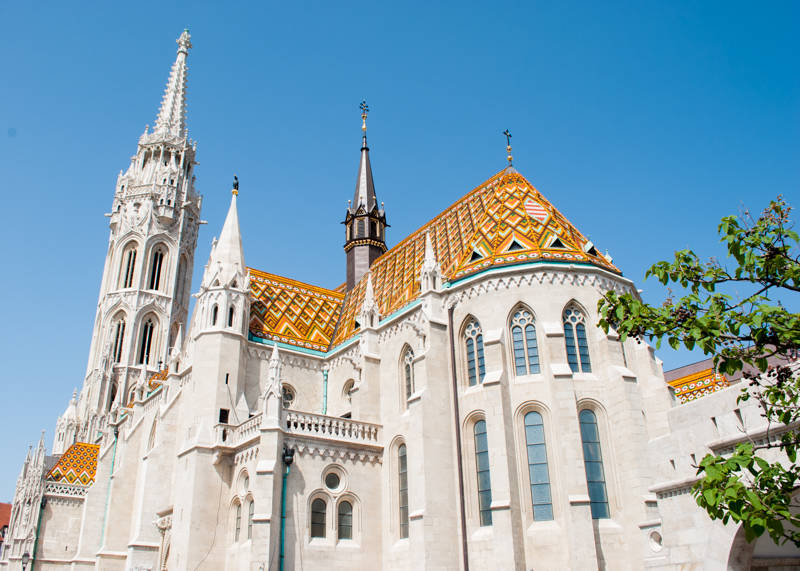
Surrounding the church you’ll find the beautiful Fisherman’s Bastion, a panoramic viewing terrace with fairy tale towers overlooking the city.
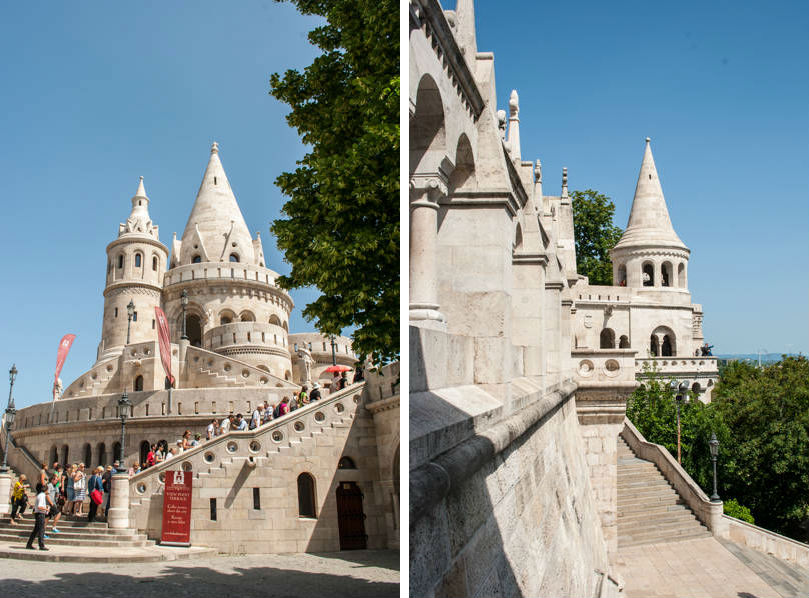
Fairy tale indeed with Cinderella paying a visit…
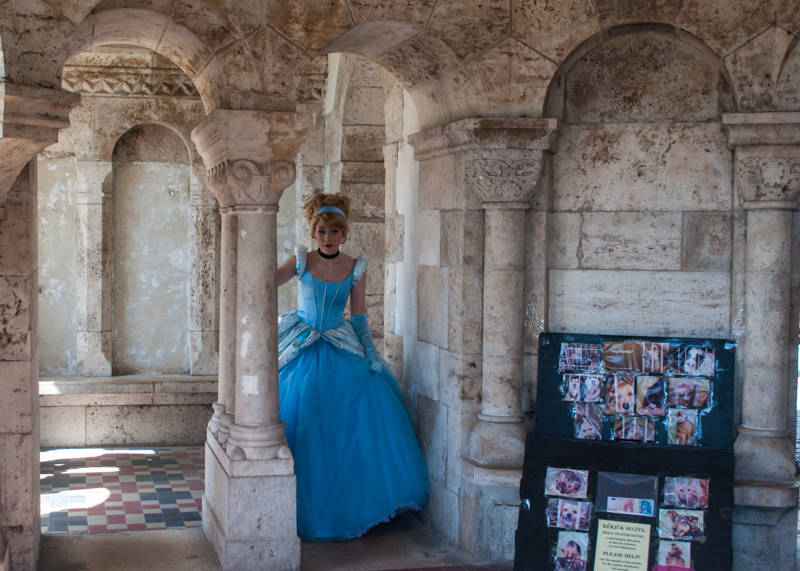
It’s also the best place to get a good look at the Parliament building, the breathtaking icon of Hungary. One can’t help but marvel at the Gothic Revival style and sheer size of what is still the largest building in the country.
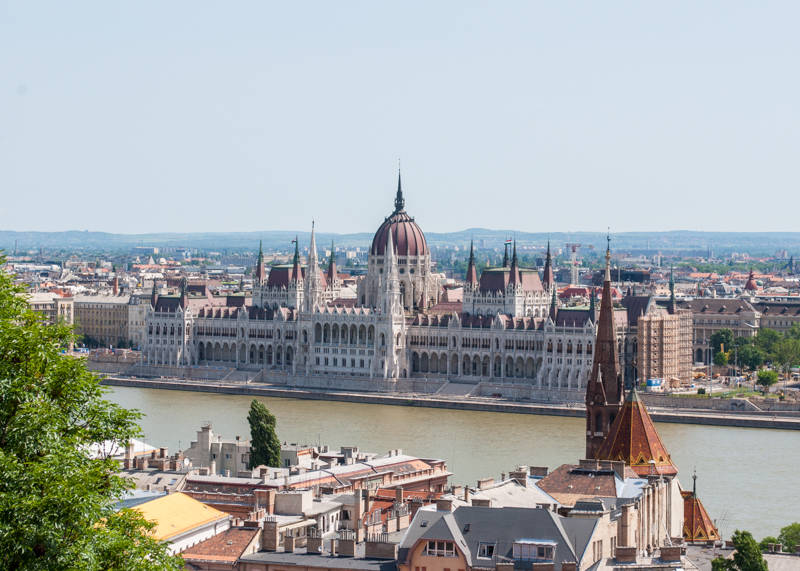
Walking down Castle Hill will bring you to the foot of yet another famous landmark: the Chain Bridge. The first permanent bridge to connect Buda and Pest, it bears as much significance here for the advancement and culture of the city than my beloved Brooklyn Bridge back home…

Now back on the Pest side, you can have a good look at the Castle Hill with the church and Fisherman’s Bastion prominently displayed.

Walking along the Danube towards the Parliament, you’ll pass a moving memorial on the riverbank honoring the Jews who were killed by fascist Arrow Cross militiamen during World War II. 60 pairs of iron shoes have been placed there to represent the shoes left behind when they got shot at the edge of the water to spare the party the hard work of burials…
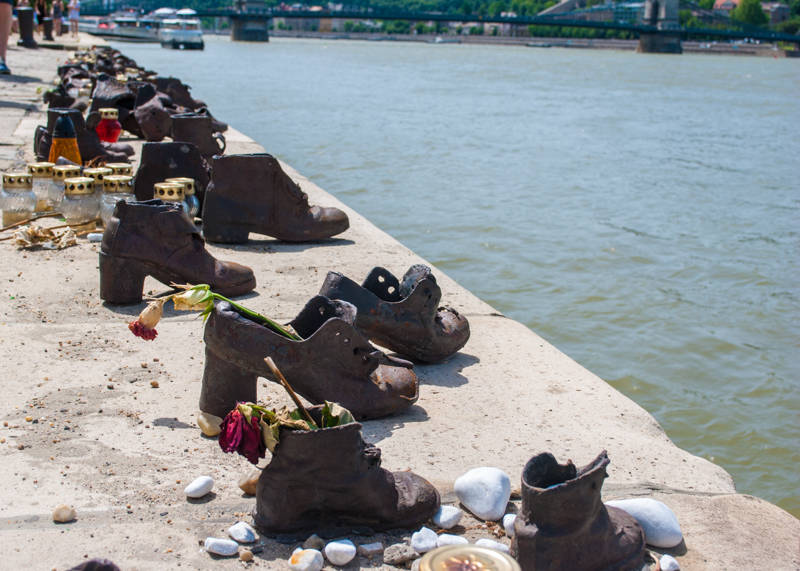
Now you can finally take a closer look and gaze at the Parliament, which clearly does not fit into your vision span. Though I prefer its look from across the river, a close up reveals stunning details and the feeling of being infinitesimally small.

Leaving the riverbank and going back in, there’s still plenty to see. Nearby Liberty Square, the largest in Budapest, is a true oasis and has one of the loveliest parks in all downtown where you can sit back and relax on a bench and admire the beautiful surrounding monuments and buildings. You can even freshen up in the interactive fountain if you’d like.
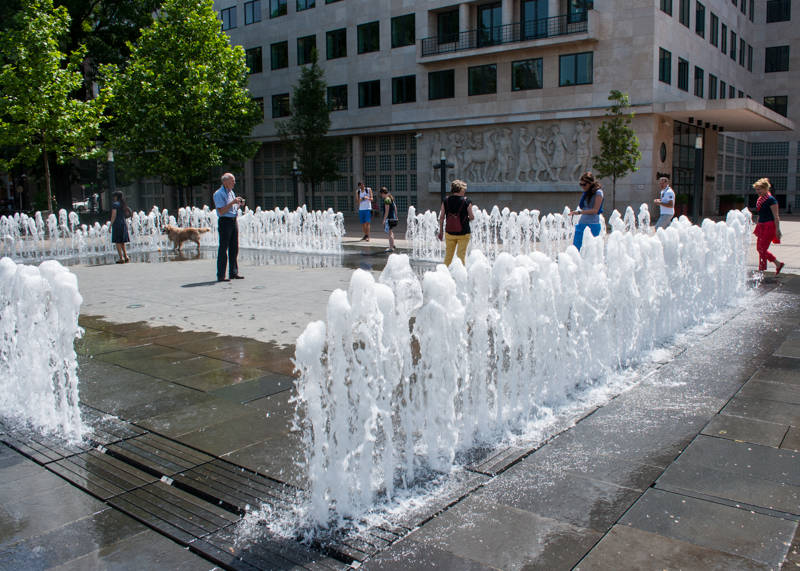
Don’t miss the lovely architecture of the National Bank building on the Southwest corner of the square.

Walking back south towards the old town, you’ll soon spot another impressive landmark – St. Stephen’s Basilica, the largest church in Budapest.
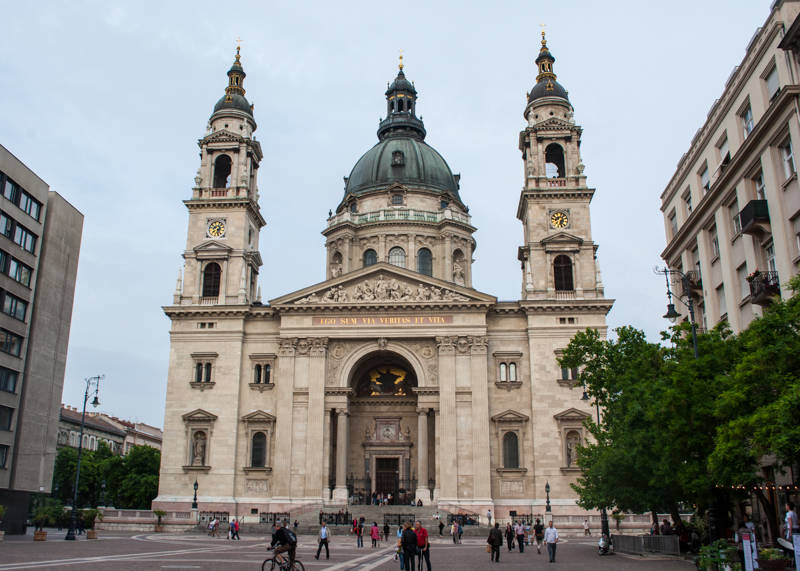
One of the streets leading up to the Cathedral, Sas utca, has become somewhat of a foodie destination. Award winning Café Kör sits at number 17 and Borkonyha Winekitchen at number 3. I paid a visit to the latter and highly recommend you do too! Borkonyha has the best wine selection I’ve seen in the city with over 200 listed, all from Hungarian wineries both large and small.
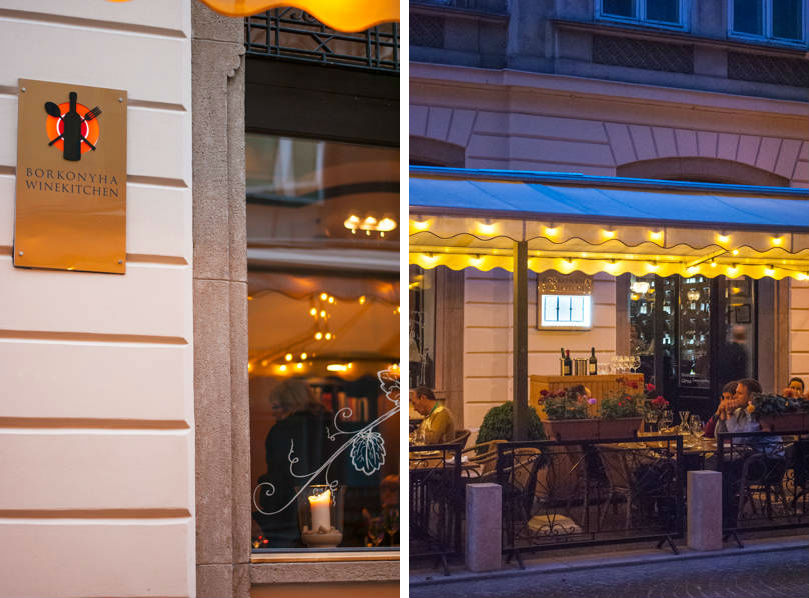
This was my best meal of the trip and proof that Budapest has really turned into a foodie destination. My student days had been soaked in beers and cheap red wine (Egri Bikavér which means Bull’s blood!) and here I was, 11 years later, savoring a 5-star meal with glasses of local Sauvignon Blanc and Chardonnay that could rival the old world’s top sellers – definitely impressed!
Pan Fried Duck Breast with Polenta and Peach
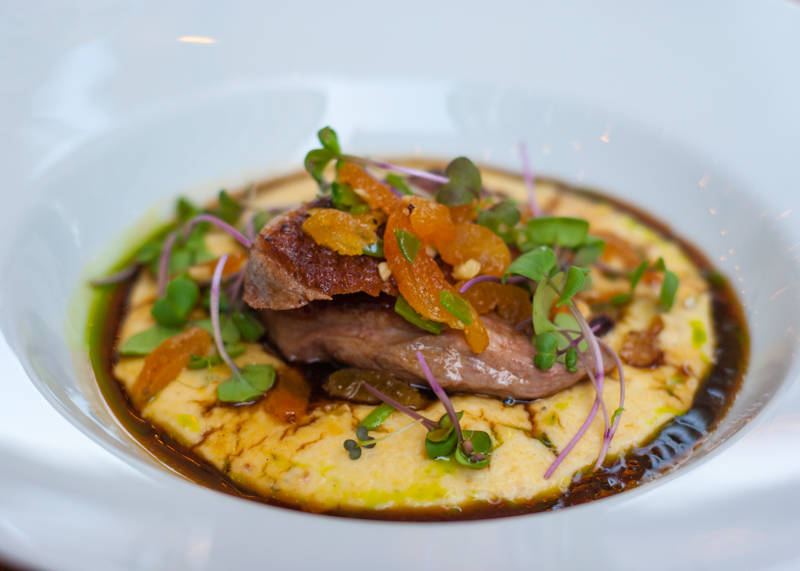
Raspberry Variation with Red Onion in Honey and Cheesecake
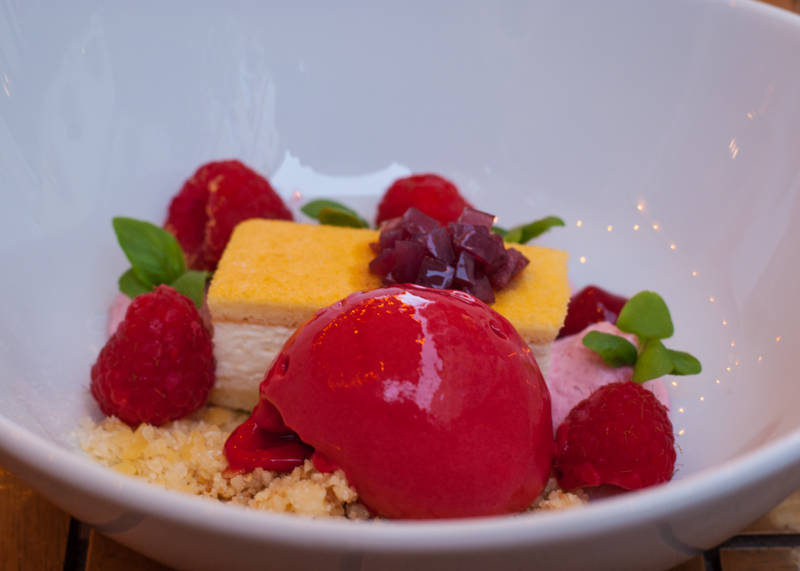
The Inner City is part of the historic old town and where a lot of the action is concentrated as most tours will depart from here. While it’s mainly a commercial and tourist hub, you can take the side streets and see the contrasts in the old buildings and the newer ones, the pastel colors and decrepit facades, etc.
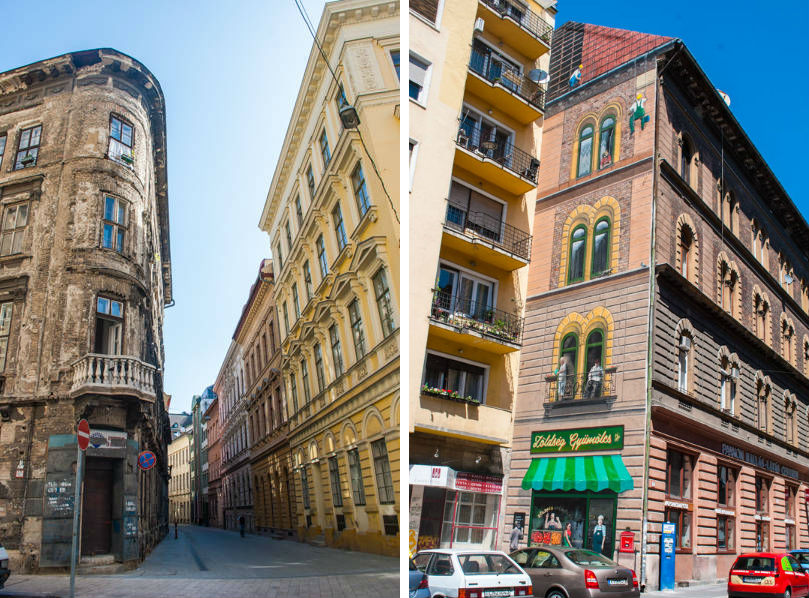
Deák Ferenc street delimits the north part of the Inner City and is a popular shopping destination.
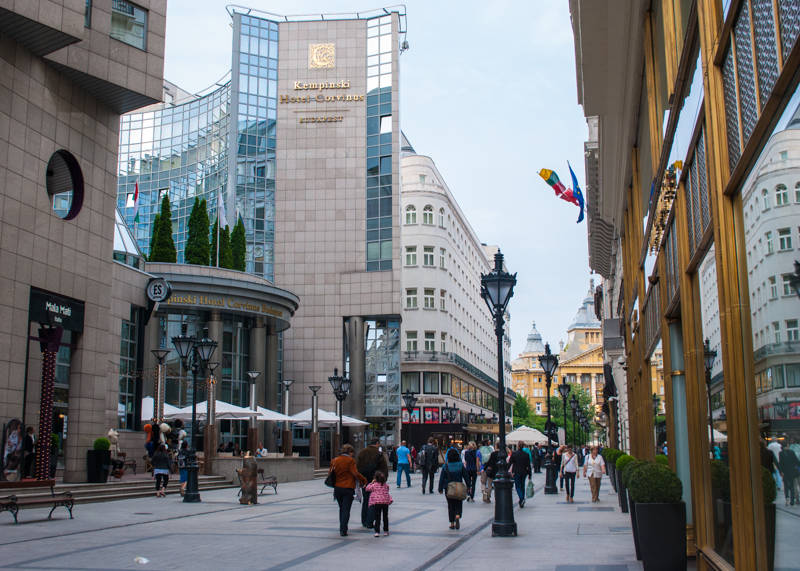
Some classic institutions deserve a visit even if only briefly such as Centrál Kávéház (known as Central Cafe). Opened in 1887, it’s one of the oldest Vienna-style café-restaurants in Budapest and is great as a pit stop for coffee and desserts. The elegant room feels like it hasn’t changed in a century.
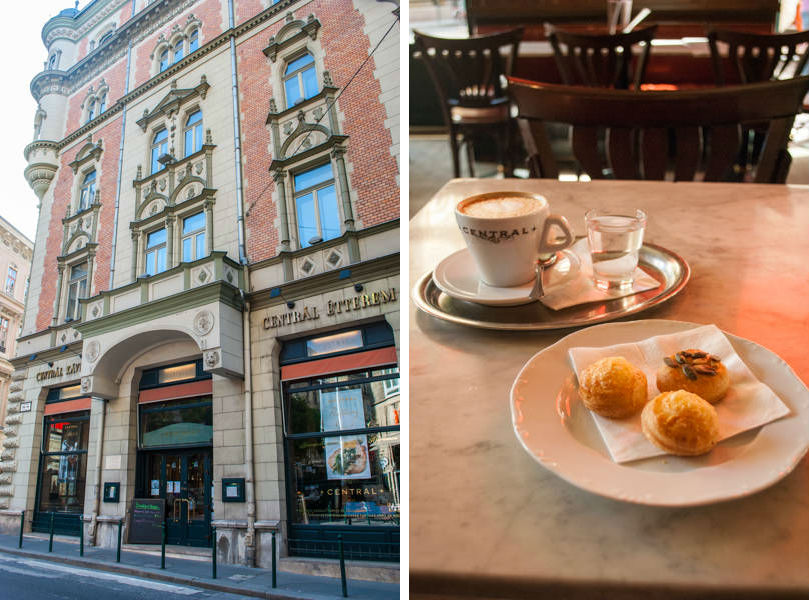
Károlyi-kert is another place in the Inner City where you can rest your tired feet. The oldest garden in Budapest has a French romantic air with beautiful flowers and little pathways.
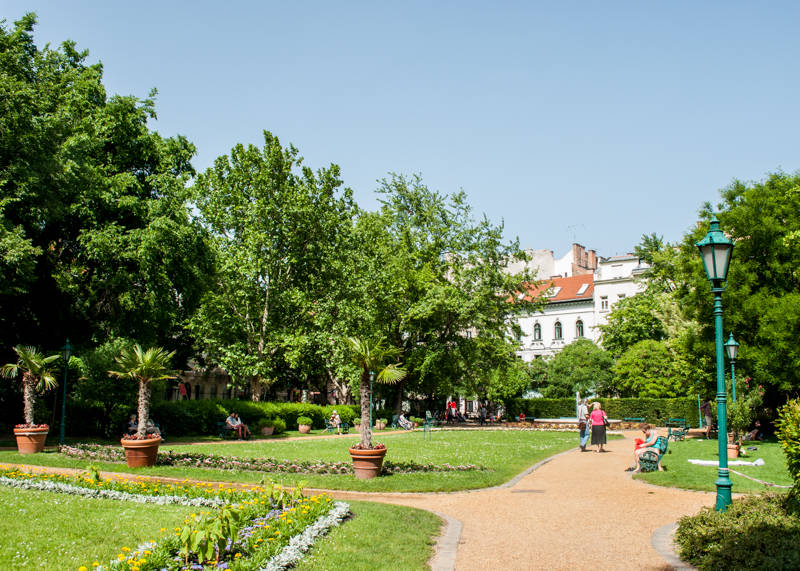
When you’re ready to shop again (!) you can’t miss the most famous pedestrian street of Budapest, Váci utca. About a mile long, it is filled with gift shops, fashion stores and street artists.
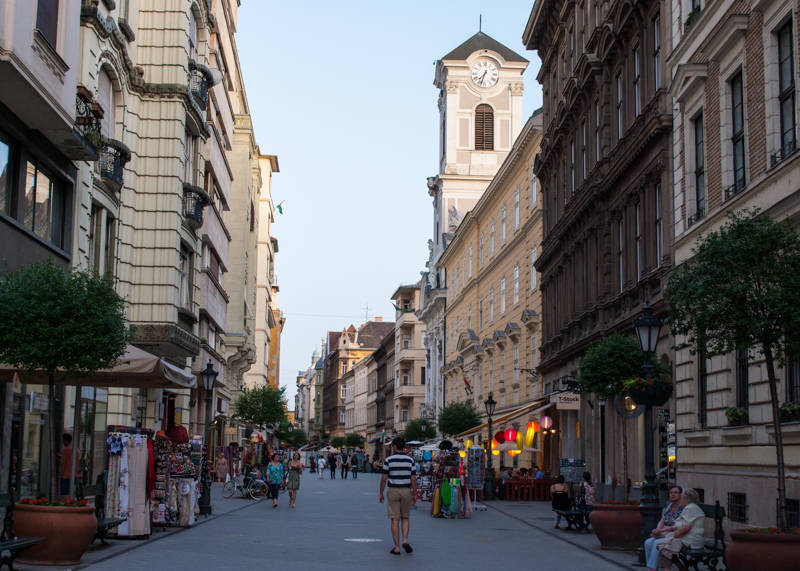
As you would expect, Váci utca also has the typical ‘tourist trap’ restaurants which is why you should definitely venture elsewhere in the side streets to find the hidden gems. One of them is Borssó Bistro, a corner bistro serving delicious French-Hungarian cuisine in a modern setting. The terrace set in a quiet little street is reason enough to visit and the cooking is of the highest quality, and very reasonably priced too!
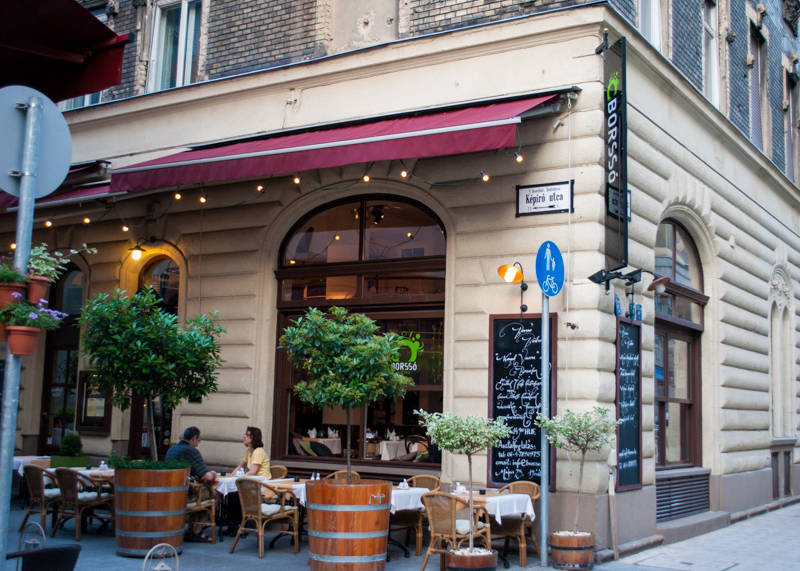
Fish of the day with homemade pasta and aioli
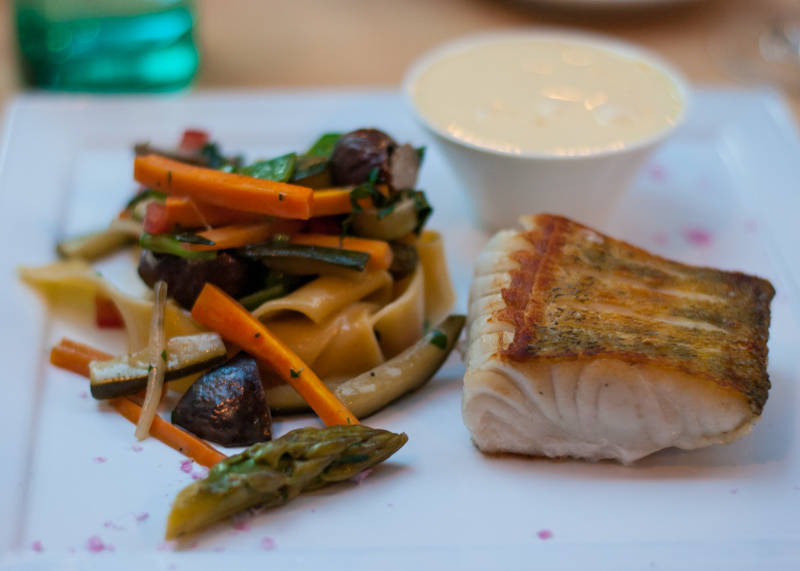
Rich chocolate cake with whipped cream for dessert
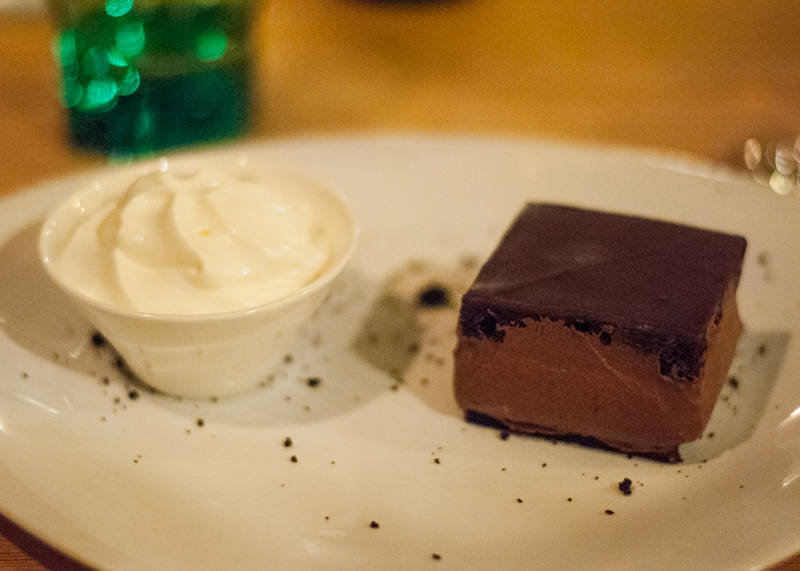
And when in Hungary, one must indulge in dessert wines… A glass of Tokaji is the perfect way to end the night.
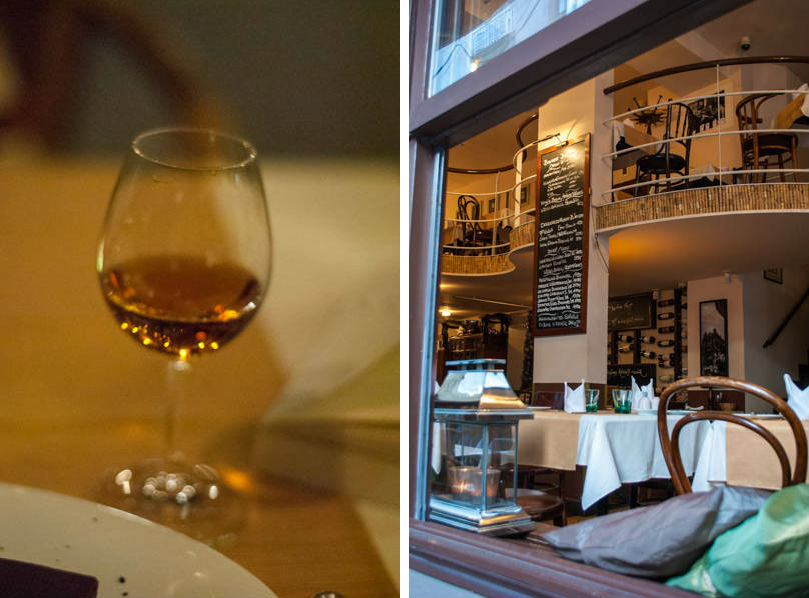
When you’ve covered up most of downtown, it’s time to head up Northeast to City Park and experience the Budapest Metro. It’s the second oldest in the world and it shows – tiny stations, vintage wagons and wooden ticket booths are as charming as it get and makes you feel like you’ve shrunk into a kid’s toy box. Even better, the main stations are all filed with the smell of freshly baked pastries which are sold 24/7 to hungry passerby. I can’t tell you how much we got to love these coming back from a late party night as the sun was getting up…bliss!
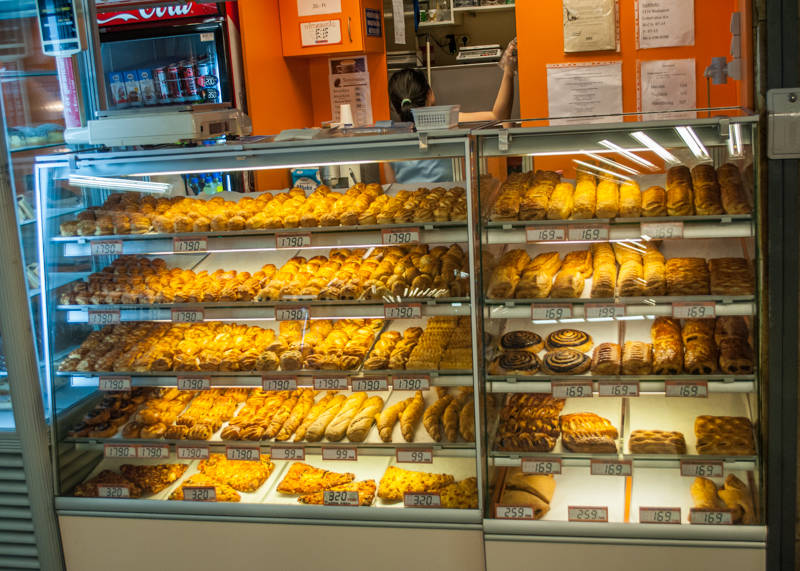
Coming out of the metro at the Hősök tere station, your first sight upon exiting is the famous Heroes’ Square and its Millenium Memorial erected to commemorate the 1000-yearl old history of the Magyars.

Make your way towards the extensive green space that is City Park, but not before a stopover at what is the most well-known restaurant in all of Hungary, Gundel. A meal in this classic Hungarian venue is an experience you won’t forget though expect to pay the price.
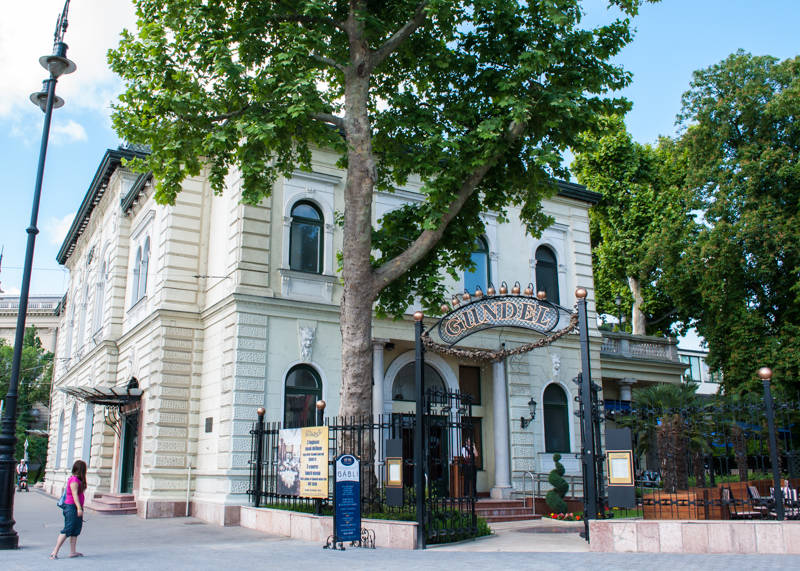
If a lavish meal is not in the cards, you can always stop at their patisserie next door which sits right next to the zoo and enjoy a coffee and a sweet.
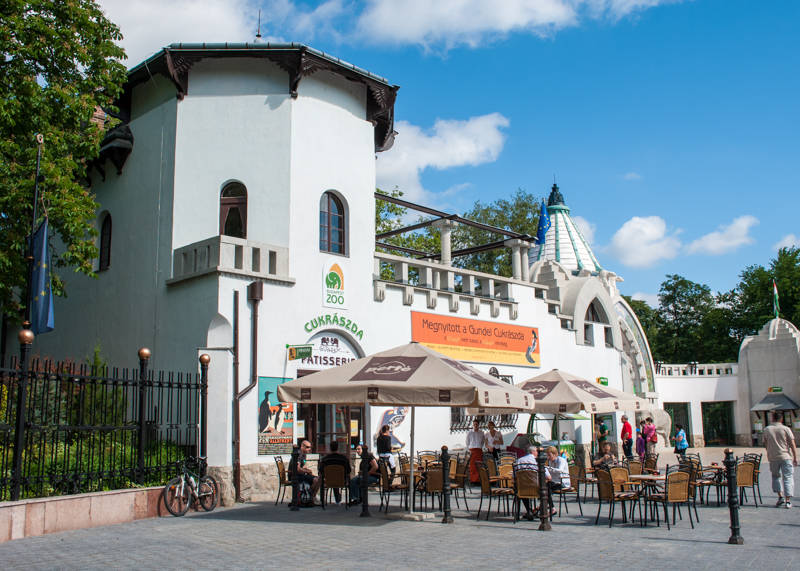
The menu is quite extensive though a few Gundel creations are an exclusivity you shouldn’t miss while you’re here and I’m talking about the Gundel pancake. Rumored to be the most famous Hungarian dessert, the crepe-like pancake made the restaurant famous around the world. It is filled with a finely ground mixture of walnuts, raisins and lemon zest, flambeed, and then served topped with a warm and sweet chocolate rum sauce, truly amazing!
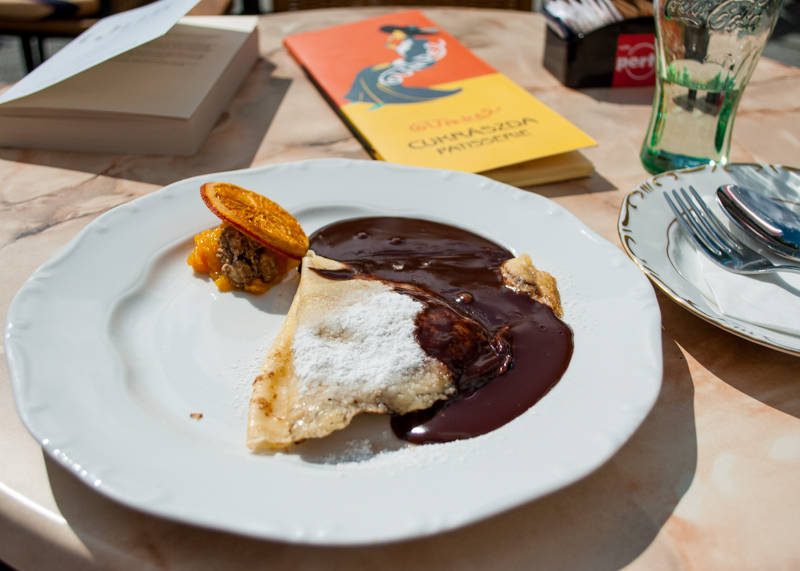
After such a rich treat, you’ll be grateful for the nice walk in front of you through Budapest’s biggest park. Loads of attractions and museums can make a day out of it, though none as indulgent as spending a few hours at the sprawling, baroque Széchenyi Baths. Budapest’s most famous baths gave me unforgettable memories of running outside in sub-zero temperatures to jump into the outdoor heated pool, encircled by thick steam clouds and surrounded by locals playing chess in the water…can hardly find a more genuine experience than this!
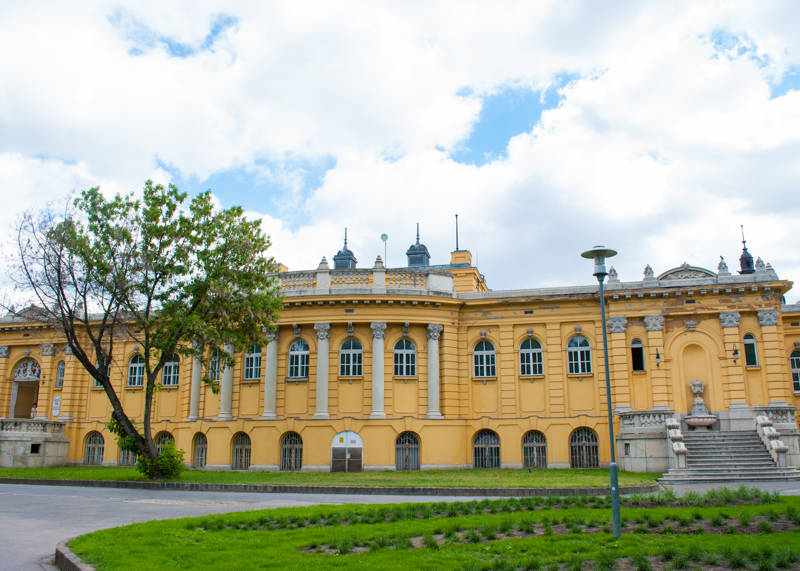
The park itself, stretching over 200 acres of land, is constantly filled with events, circus, and fairs. If Gundel didn’t fill you up, you’ll have plenty of opportunities to eat more simply walking around here.

Strudels originated in Hungary and are hugely popular here, especially the traditional fillings of walnuts and cherries.
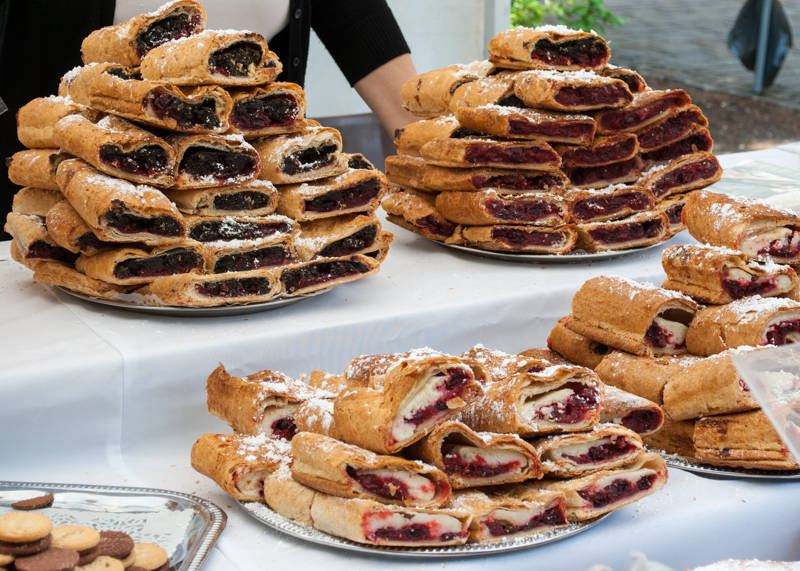
The Vajdahunyad Castle is one of the main landmark of City Park, and yet another fairy tale construction.
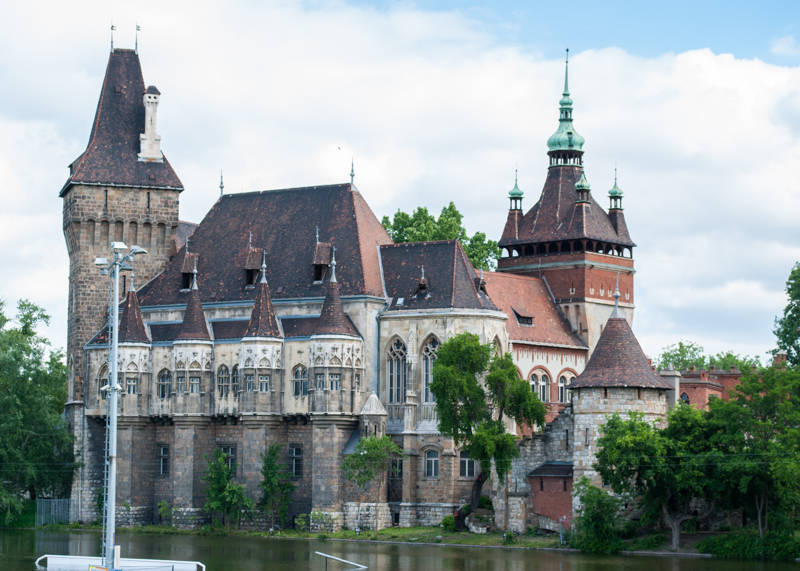
The intriguing statue of Anonymous in the castle court – the 12th century writer of the ‘Deeds of the Hungarians’ has never been identified.
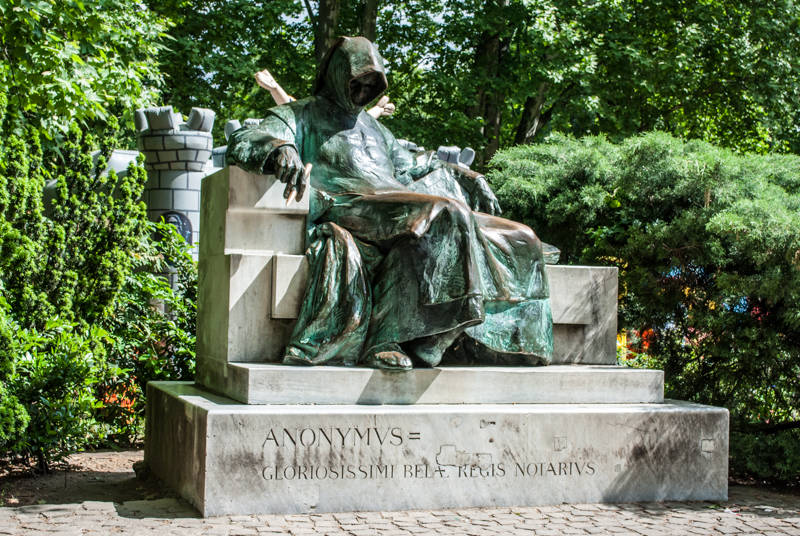
The sheer size of the park means you can wander around the green paths, sit by the water, and enjoy a bit of quiet time in this bustling city.

Saving the best for last, no doubt that Budapest’s exquisite beauty is centered around the river and nothing will beat a walk along the Danube at night when everything is glowing and reflecting on the water. The Chain Bridge is especially spectacular.
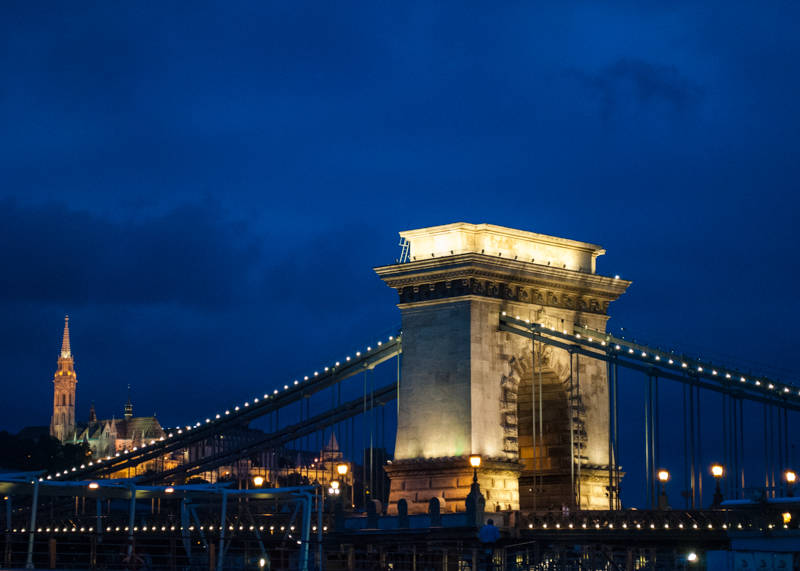
The castle seems bigger than ever, towering above the city.
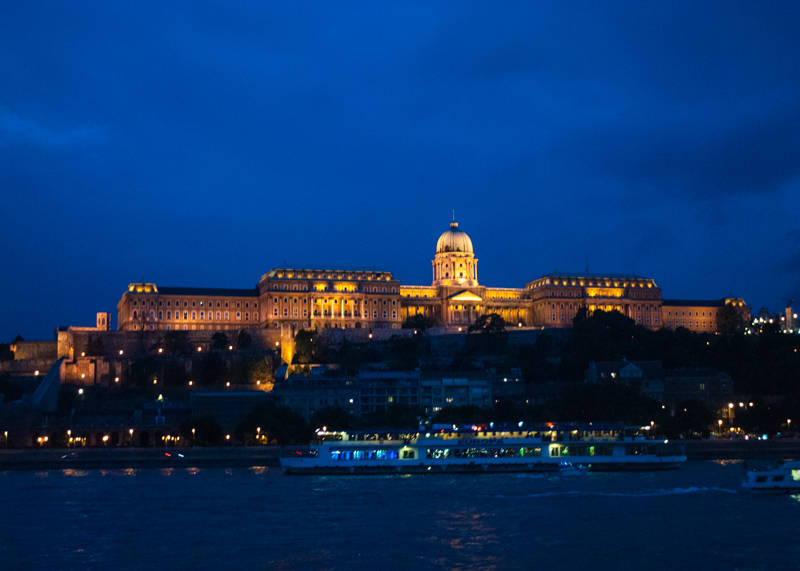
The river is lined with boats, most of them turned into bars or restaurants offering magical settings and views.
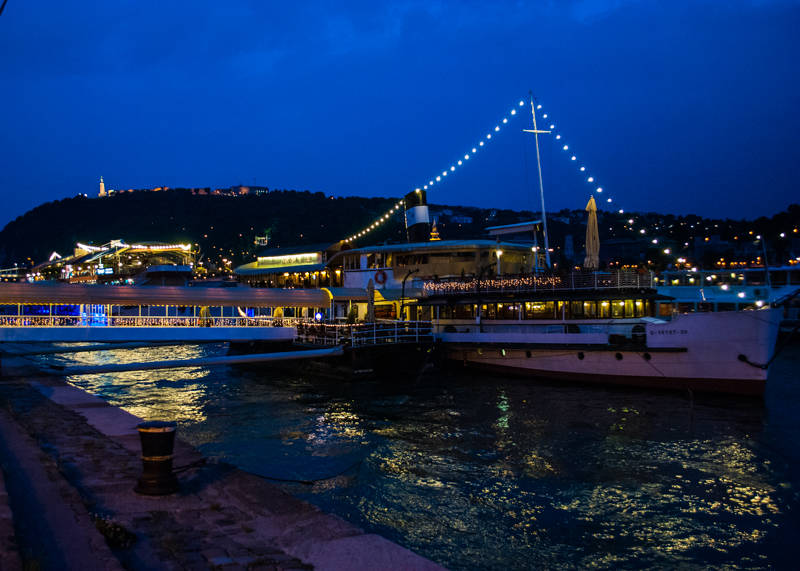
And we conclude back at the starting point, Fővám tér with views of the Liberty Bridge, more stunning than ever, and the Gellert hotel in the background…
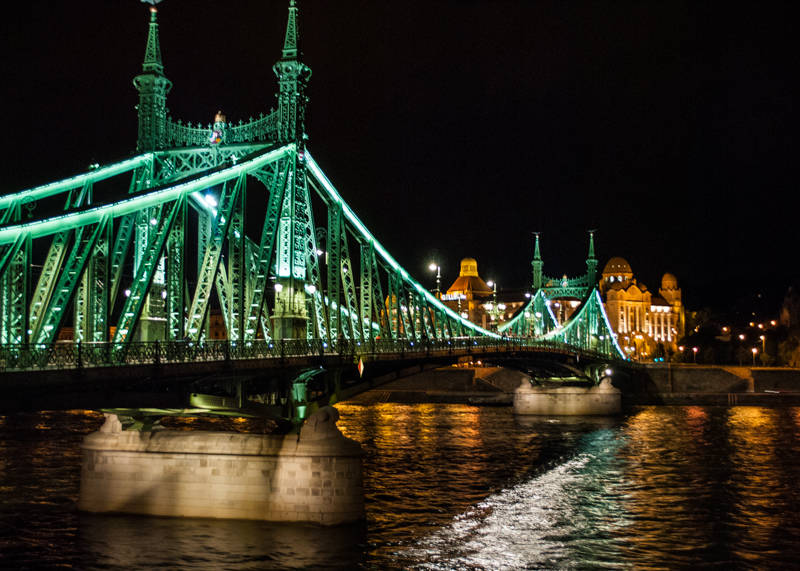
Budapest has just gotten better and is so inspiring I really look forward to see what else she has in store…check back in another decade? 😉

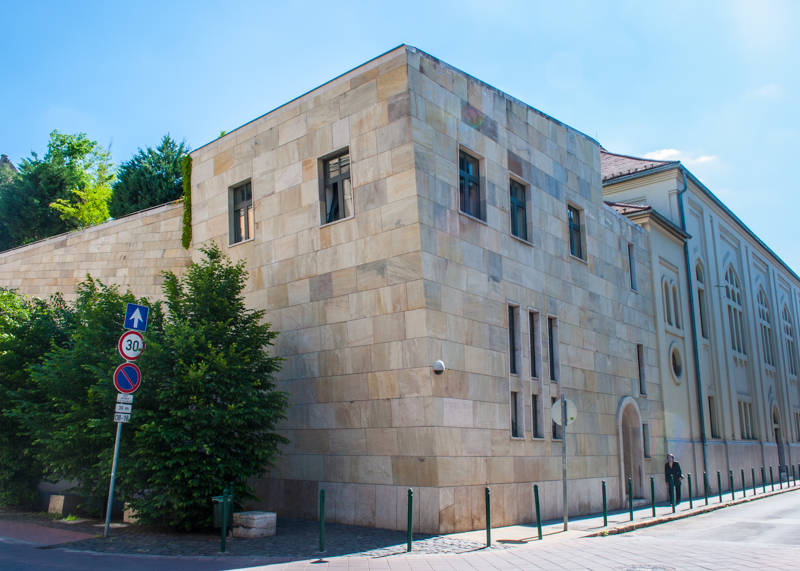
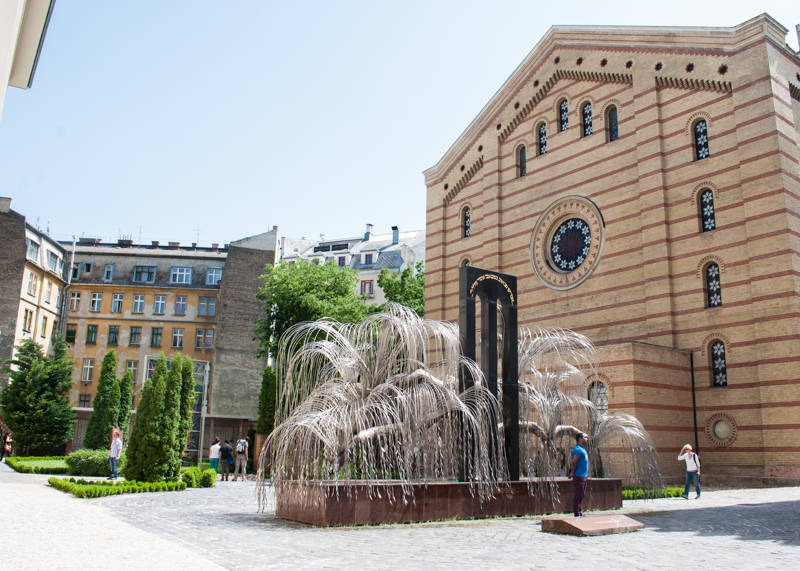

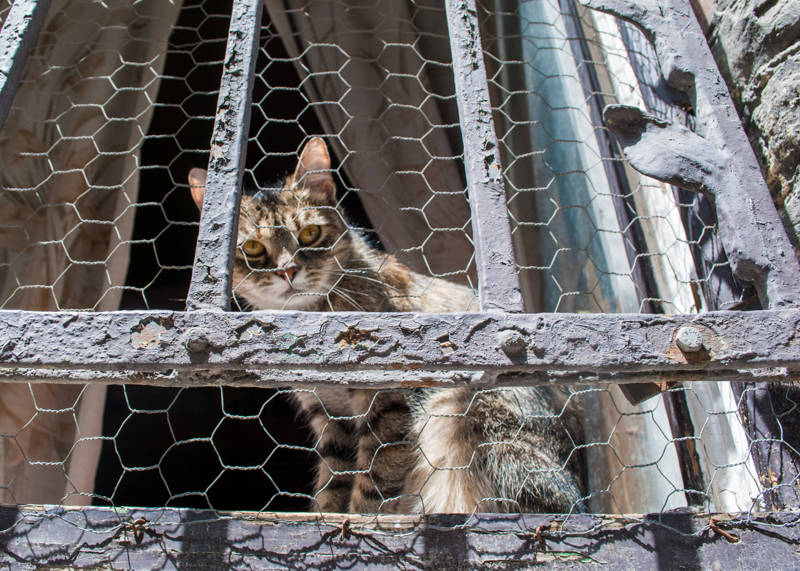
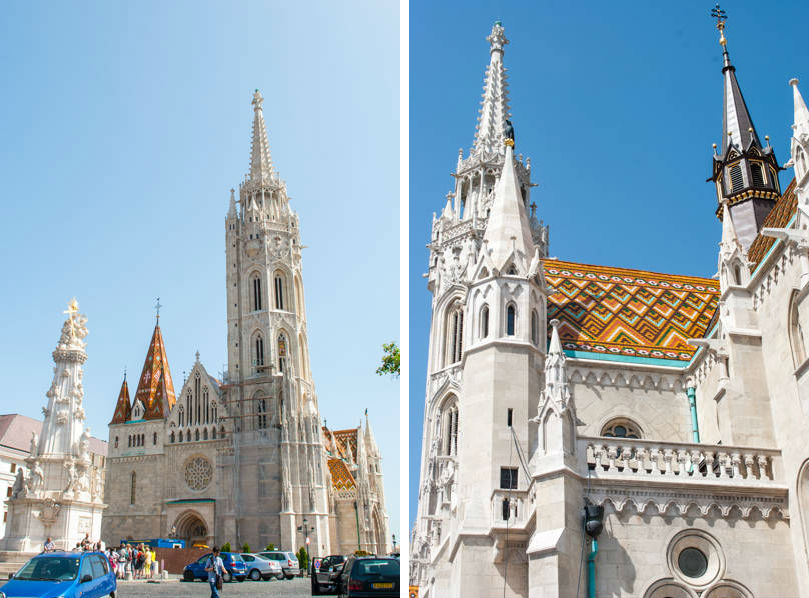
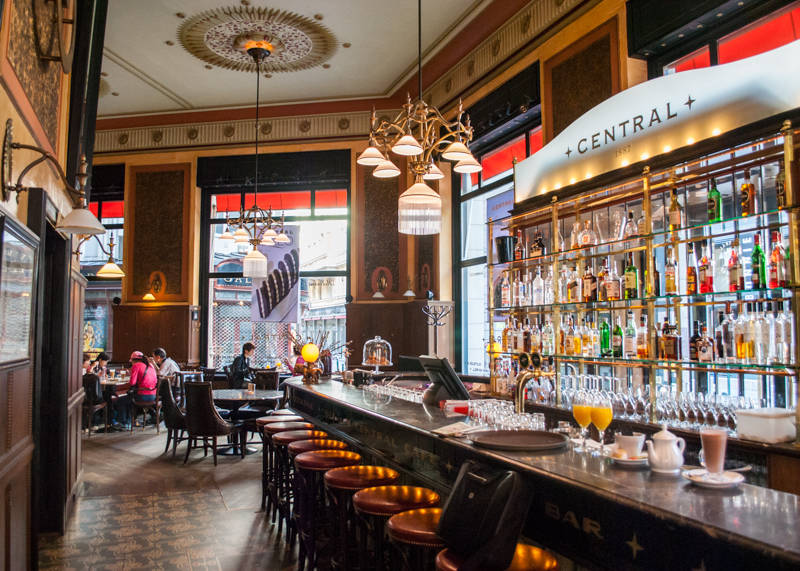
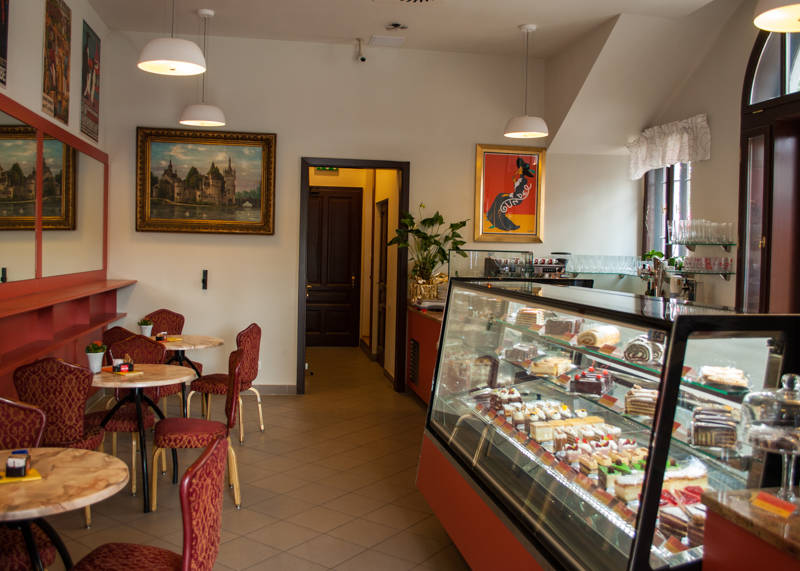
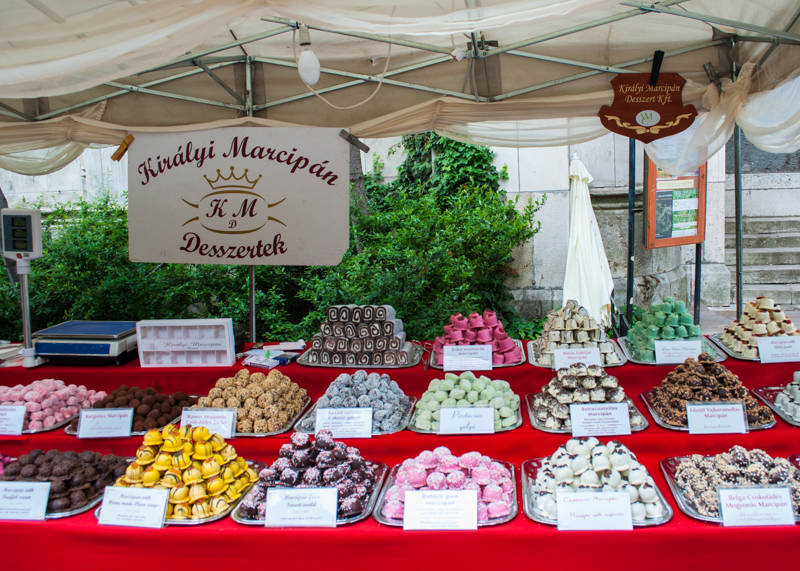
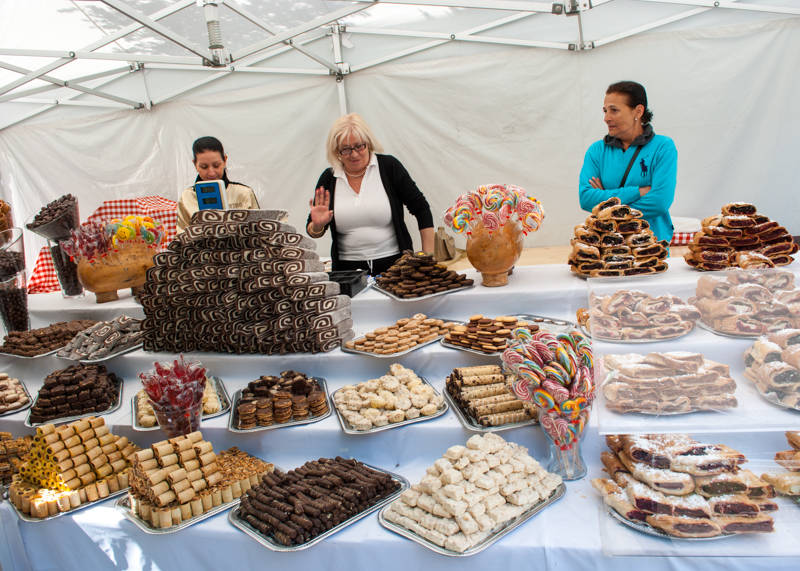
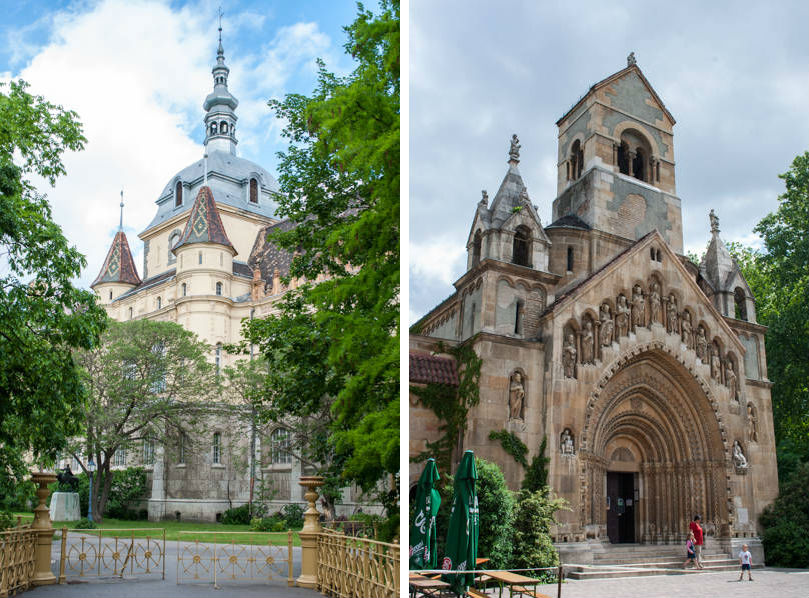
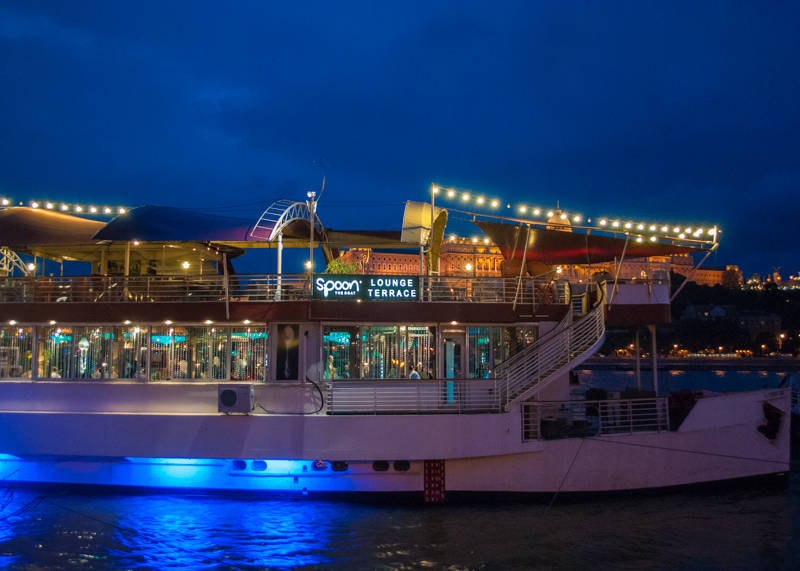
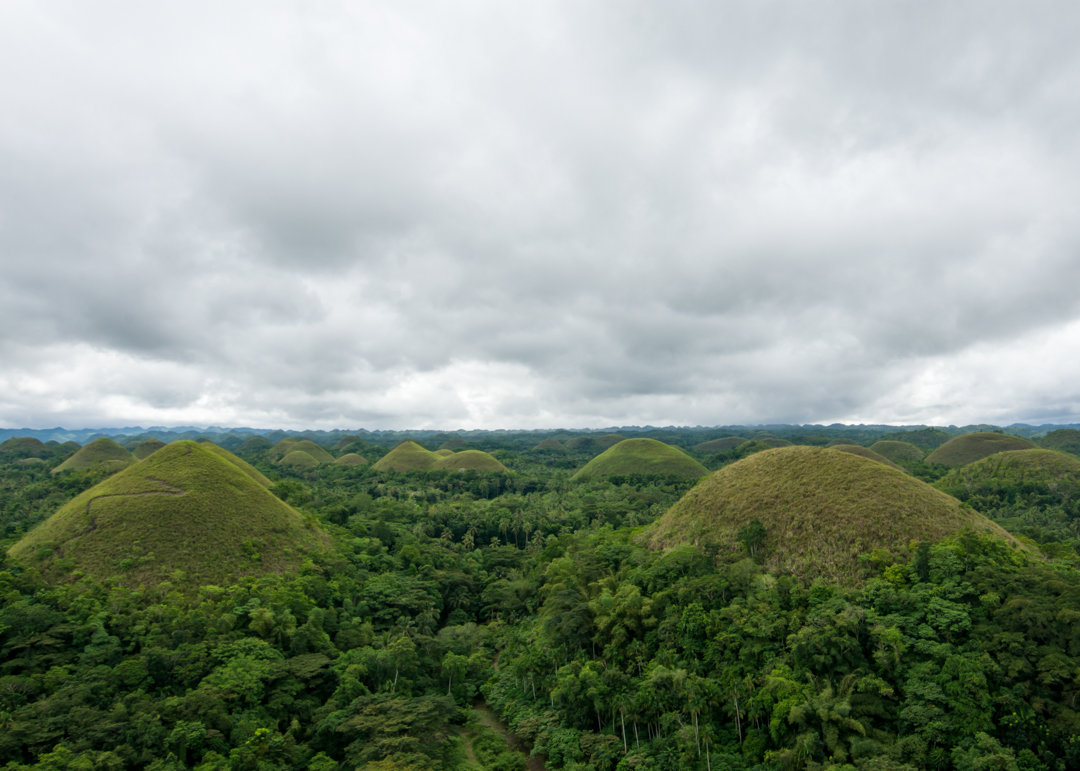

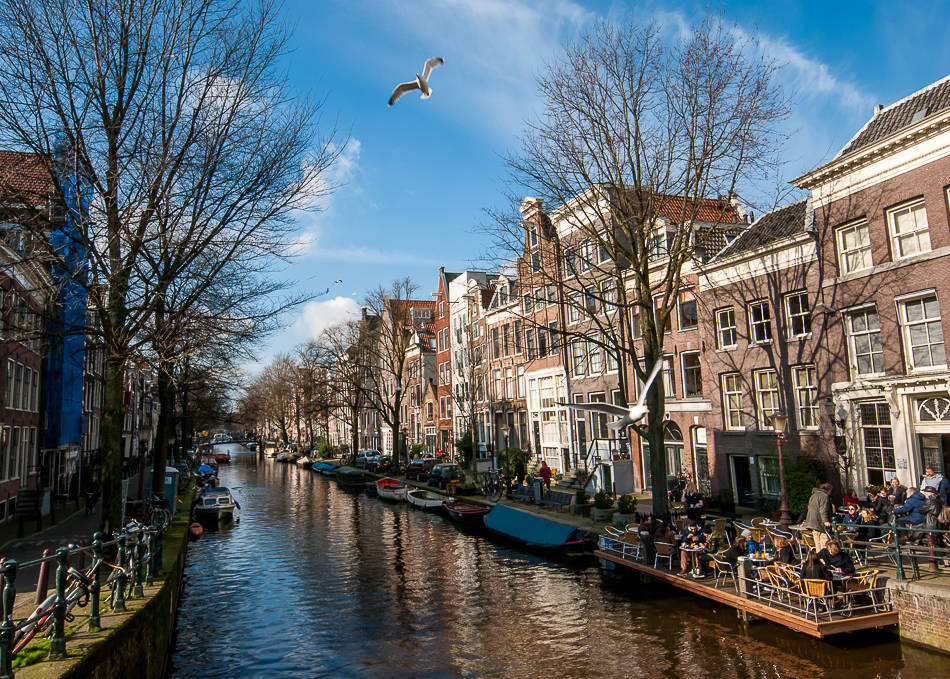


Fabulous photos. Love your combination of food and architecture – two of my favourite things. Really makes me want to go back as I was last there 13 years ago. What I did watch though when I was there was a fantastic film – just released at the time called ‘sunshine’ well worth seeing if you have just been and like history. It is with Ralph fiennes and covers 3 generations of a Jewish family in Budapest during the turbulent 20th. Century fantastic but underrated I think as it is quite long….
Thanks! Hope you’ll be able to make your way to Budapest soon, you’ll be amazed at all the changes. And thanks for the tip on Sunshine… had heard of it but never managed to watch it, will seek it out now!
Thanks Sandra!! As always a beautifully written, informative, inspiring read. Makes me want to go there. Your photos are stunning (again, as always) and I appeciate that you cover a range of sights to see. I too love architecture and food so love your posts.
Sam
My pleasure Sam! I refrained from adding a lot more photos of buildings but I think I’ll be more generous with those in the future seeing as a lot of people seem to like architecture…and it’s a good way to discover a city you’ve never been to!